








Lorne, Live Wire Park
Located near the Great Ocean Road in Lorne, Live Wire Park school programs are suited to educational groups of all ages and abilities.

While the park is known for its physical challenges, our trained staff also incorporate educational elements.
A fun-filled experience which will challenge the mind and body in a day of active outdoor exploration ncludes:


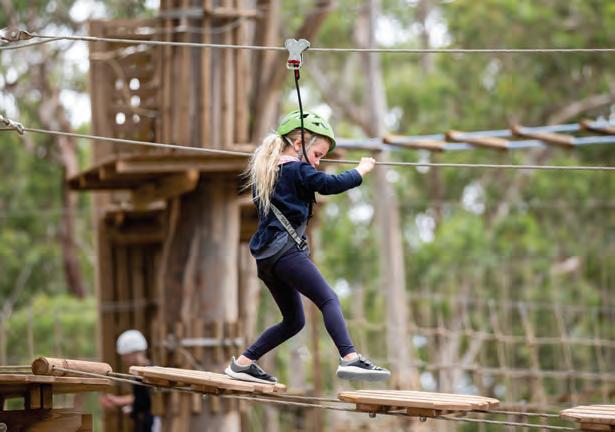

The reverberations of the pandemic continue to be felt throughout the education sector with teacher workloads and shortages becoming a primary concern across the sector. Culminating in industrial action and release of the Teacher Workforce Shortages Issue Paper on 8 August, the paper sets out the nature of the problem and responses to date, aiming to prompt discussion on priority areas of focus and potential actions to address teacher shortages.
Many of us are enjoying the positives of being back face-to-face in the classroom and professionally. EduTECH took place in Melbourne’s Conference and Exhibition Centre on 10-11 August which was attended by over 10,000 professionals including the Education Matter’s Team! It was a great to hear the latest on thought leadership, technology and trends shaping the education industry and to meet with clients both old and new.
More change is afoot with the now-endorsed Version 9.0 of the Australian Curriculum set to be rolled out in 2023. In this issue our Hot Topic feature looks in more depth at the process of these revisions and discusses what the next steps may look like for teachers and educational professionals. With expert insight from David de Carvalho, Chief Executive Officer, ACARA, Sharon Foster, Executive Director, Curriculum, ACARA and Veronica Yewdall, Professional Officer, Independent Education Union of Australia (IEU).
The wellbeing of students continues to be a primary focus of the sector. We speak with Diane Furusho, Deputy Principal (Student Wellbeing, Respectful Relationships & Consent), Haileybury about its award-winning wellbeing programs.
We take a look at the latest technology, and much more.

I hope you find this an insightful edition of Education Matters Secondary.
Janet Stone
Editor for Education Matters
janet.stone@primecreative.com.au
Chief Operating Officer: Christine Clancy christine.clancy@primecreative.com.au


Managing Editor: Myles Hume myles.hume@primecreative.com.au
Editor: Janet Stone janet.stone@primecreative.com.au
Design Production Manager: Michelle Weston

Art Director: Blake Storey
Design: Michelle Weston
Advertising: Kylie Nothrop kylie.nothrop@primecreative.com.au 0422 046 299
Education Matters is a division of Prime Creative Media Pty. Ltd. 11-15 Buckhurst Street, South Melbourne 3205
Ph: (+61 3) 9690 8766
Fax: (+61 3) 9682 0044
Education Matters is available by subscription from the publisher.
The rights of refusal are reserved by the publisher. Ph: (+61 3) 9690 8766 E: subscriptions@primecreative.com.au
All articles submitted for publication become the property of the publisher. We reserve the right to adjust any article to conform with the magazine format.
Haileybury
Copyright Education Matters is owned by Prime Creative Media Pty. Ltd. and published by John Murphy. All material in Education Matters is copyright and no part may be reproduced or copied in any form or by any means (graphic, electronic, or mechanical including information retrieval systems) without the written permission of the publisher. The Editor welcomes contributions but reserves the right to accept or reject any material. While every effort has been made to ensure the accuracy of information, Prime Creative Media will not accept responsibility for errors or omissions or for any consequenses arising from information published. The opinions of the magazine are not necessarily the opinions of, or endorsed by the publisher unless otherwise stated. All photographs of schools (including students) depicted in feature articles and advertisements throughout this magazine have been supplied to the publisher (and approved) by the contributing school. All material supplied by schools is done so with the understanding that such images will be published in Education Matters and may also appear on the our website: www.edumatters.com.au.





A snapshot of the latest news and developments in the education sector.
President of the Australian Secondary Principals’ Association, Andrew Pierpoint, shares insights from recent research on how to tackle the shortage and attrition of principals.
Diane Furusho, Deputy Principal (Student Wellbeing, Respectful Relationships & Consent), Haileybury, Melbourne, discusses the school’s award-winning wellbeing programs.
The new Australian Curriculum has been endorsed with a view to be implemented in 2023. Education Matters looks at the process of the revisions and what this will mean for teachers and education staff.
Opinion pieces featuring CEO of ACARA, David de Carvalho; CEO of Education Services Australia Andrew Smith; eSafety Commissioner Julie Inman Grant; and Dr Jill Colton from the University of South Australia.
Dr Janelle Wills discusses how the development of instructional exper tise requires focused and deliberate practice.
EC Premium is a new professional learning approach described as the ‘Spotify’ of professional learning.
Maths scores across Australia are in sharp decline. Casio Education offers several resources to help teachers.
The release of the AITSL report has made identifying cultural inclusion in the classroom and reviewing teaching practice a requirement. Dr Tracy Woodroffe discusses what teachers can do to ensure their professional development is relevant to their practice.
38 The world awaits WorldStrides educational travel programs offer students a variety of academic and personal development opportunities around the globe.
Crucial to Australia’s future is the looming shortage of highly-skilled teachers in schools, says Professor Mark Hutchinson, President of Science & TechnologyAustralia.
At a time when staff workloads are under immense strain, and schools are scrambling to consolidate their systems, NEO by Cypher Learning can offer a solution that aims to reduce workloads both in the long and short term.
The New Labor Government plans to lift teacher entry standards and boost teacher numbers, as part of a plan to raise the status of the teaching profession, fix teacher shortages, and improve student results.
If the federal government doesn’t act now, we’re going to have a massive teacher shortage in coming years – we’re already facing shortages and Australia will be about 4,000 teachers short by 2025, according to Senate testimony from the federal education department said Prime Minister, Anthony Albanese in a recent press release.
To tackle these issues, Labor plans to:

• Seek to double the number of high achievers studying teaching over the next decade. To help achieve this we will pay 5000 students who get an ATAR of 80 or above a bursary of up to $12,000 a year to study an initial teacher education degree.
• Boost the High Achieving Teachers Program to support 1,500 qualified professionals in other fields – including mathematicians and scientists – to retrain as teachers through an employment-based pathway that will

pay a part-time wage while they complete an intensive master’s degree in education. The 1,500 extra places will include 700 new Teach for Australia teachers and 60 new teachers through LaTrobe University’s Nexus Program.
• Labor will work with States and Territories, through the next National School Reform Agreement, to make sure teachers have a better career path with more opportunities to become recognised and rewarded as experts, and to pass on their skills to other teachers without having to leave classroom teaching.
• Labor will invest $146.5 million to deliver the plan, over four years. This investment will improve outcomes for our kids, and lift education standards for our nation – helping to secure a Better Future for Australians.
“We want to make sure our kids get the best education they can. That means we have to make sure they get the best quality teaching. Labor’s plan will incentivise the best graduates to join the teaching profession, leading to a brighter future for our students and for the nation,” said the Prime Minister. EM
Some of Queensland’s brightest minds in education research have been granted a combined $1 million in government funding to respond to modern challenges in education and build solutions.
Education Minister, Grace Grace has announced the 14 successful projects to receive Education Horizon grants for high-quality early childhood and school education research for 2022 – 10 of which are led by women.
“We are always looking to improve outcomes for all Queensland students,” Ms Grace said.
“The Education Horizon grants are more than just funding to support quality research, they are an investment in our students’ futures.
“I’d like to congratulate all of the successful applicants. It’s heartening to see so many women represented among the grant recipients as well,” continued Ms Grace.
Each of the 14 projects were selected by a departmental panel from a total of 42 applicants, with the successful projects to be delivered over a six-month period.
Minister Grace said the Education Horizon grants were first launched in 2016, with this the fifth grant round to be awarded.
“As with previous years, this year’s research projects will create valuable resources for schools and inform improvements across the education system,” Ms Grace said.







Andrew Pierpoint is the President of the Australian Secondary Principals’ Association – the peak body for School Leaders across Australia. He previously was President of the Queensland Secondary Principals’ Association for four years.

He has had extensive experience, over 37 years, in High Schools as a science teacher, Head of Department (Science), Deputy Principal and Principal as well as having several system positions in the support of Principals. Throughout his career, Andrew has worked in complex rural and remote communities through to large regional and metropolitan schools. He has led communities and reference groups at district, regional, state and national levels. Andrew’s special interests are the provision of high-quality professional learning for school leaders, school leader wellbeing and is personally highly active in school sport.
We recently conducted research into issues of attraction and retention of Australian principals. There is increasing evidence about a crisis in principal health and wellbeing in Australian schools, which can be seen alongside rising concerns about shortages and attrition of principals across the country. This is not an issue localised to Australia, and similar trends are evident in countries around the world. As part of our research, we sought the perspectives of current, former, and aspiring principals so we could learn from principals who have left the role, and those who might be considering taking on a school leadership position in the future. Our research comprised of an anonymous online survey with 149 responses, alongside focus groups and interviews which enabled us to draw out themes and trends from the survey in more depth. We share key findings below.
The research explored barriers towards applying for principal positions, and found a number of issues that were preventing people from wanting to take on the principalship, or that were impeding their efforts to do so. The most common response related to aspiring leaders’ concerns about the workload and emotional intensity involved in the principalship. A related issue was concern about the negative impacts of the role on applicants’ health and wellbeing, given ongoing evidence and reports of declining health and wellbeing for principals. Participants also raised concerns about facing in relation to processes of identification and recruitment of leaders. They noted gender and equity issues, the negative effects of ‘inner circle’ networks that are difficult to break into, and many cited a lack of
adequate preparation to take on the role.
We also asked aspiring principals about their motivations. The key themes related to opportunities to make a difference for young people and school communities, and opportunities to develop and support teachers. We asked experienced principals what advice they would have for aspiring leaders, and the findings highlighted the importance of having a supportive and trusted mentor, having a clear understanding of the challenges and realities of the role before taking it on, and having a strong sense of self before becoming a principal.

We also explored the reasons principals leave the role early. Overwhelmingly, participants described their feeling of a lack of support from education systems and policymakers. They described an increasing focus on compliance and risk-aversion, which took them further and further from their core purpose of educational leadership. Unsurprisingly, another common response was about the effects of the role on principals’ health and wellbeing as a significant factor in their decisions to leave the role prior to retirement age. The issues around workload are not limited to the volume of work, but also the intensity of the types of work being required. High levels of emotional intensity and ongoing crisis-management were described by many as reasons that were influencing their intention to leave the profession.
We asked participants what they want system leaders and policymakers to know. They described a need for meaningful support for school leaders,

that met their needs and was contextually-relevant (what one principal needs will not necessarily be the same as another; and what is needed at different career stages will change over time). Our analysis showed a consistent theme that principals do not feel trusted by increasingly risk-averse systems, and that this is stifling their ability to undertake their work. Finally, as with other recent campaigns for teachers, leaders discussed the importance of raising the status of principals’ roles, and recognising the complexity of their work.
Our recommendations arising from the findings include:
1. The creation of contextually relevant principal induction and ongoing development programs, differentiated for context and career stage.
2. Investment in formal mentoring programs for aspiring and current principals. These should be funded, including dedicated time for experienced
principals to be trained as effective mentors, particularly for schools which experience high rates of turnover and shortages of applicants.
3. The development of a national campaign to recognise the complexity and importance of school leaders’ and teachers’ work. With professional status (and a lack of political, media, and public support) frequently cited as a concern, the narrative needs to change.
4. Meaningful reduction in workload, with effor ts led by principals. This major issue transcends system and geographical jurisdictions. A sustained cross-system, cross-sector effort is a critical first step.
5. A realignment of system and school balance towards proactive support for principals, rather than monitoring and compliance. This would respond to principals’ concerns about a lack of trust from risk-averse systems. This should include investment in proactive support for principals, including for mental health and wellbeing. EM
Teachers are artists…and like any artist, teachers must continuously better their skill using the most up-to-date techniques based on research and theory. Here you are given the science. Now you provide the art.”

From the introduction to The new art and science of teaching

Dr Amanda Heffernan is a Senior Lecturer in Education in the Manchester Institute of Education, at the University of Manchester. She previously worked as a teacher and school principal in Australian schools, and then as an academic in Australian universities for nine years. Her research focuses on the contemporary challenges of principals’ work, and what that means for how we can better attract, support, and keep school leaders within the profession. She has a particular interest in leadership in complex school settings, including those in rural and remote areas, and the skills and knowledges that are needed to successfully lead those schools.

The new art and science of teaching by Dr Robert J. Marzano is the most detailed, evidence-based instructional framework ever created. The bestselling resource comprehensively addresses the most alterable effect on student achievement – quality instruction. Readers are introduced to 10 design areas within three categories of teaching - (1) feedback, (2) content, and (3) context - that form a roadmap for teachers’ lesson planning. In all the framework offers


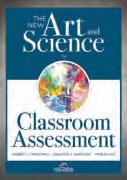
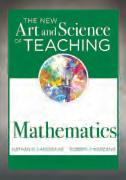

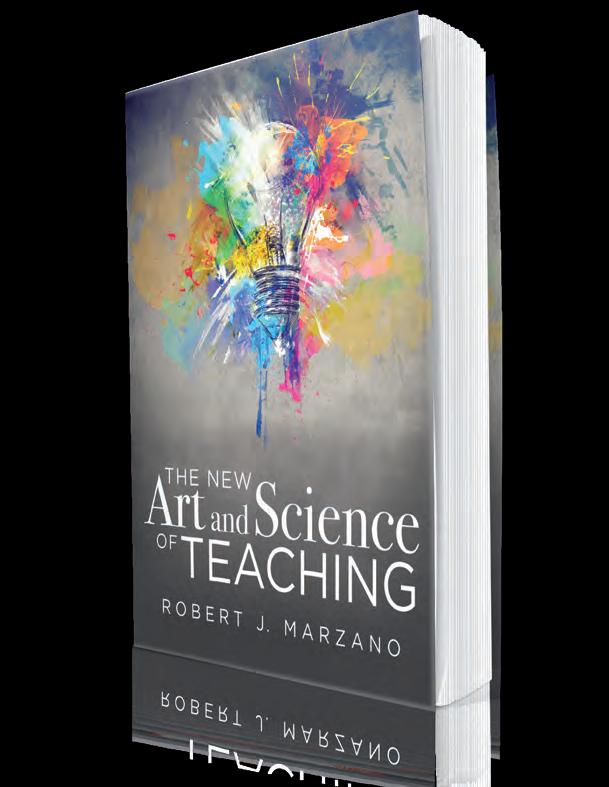
specific classroom strategies educators can implement
instructional strategies and over

STUDENT WELLBEING HAS BEEN BROUGHT TO THE FORE OF SCHOOL PRIORITIES SINCE THE PANDEMIC BEGAN. EDUCATION MATTERS TALKS TO DIANE FURUSHO, DEPUTY PRINCIPAL (STUDENT WELLBEING, RESPECTFUL RELATIONSHIPS & CONSENT), HAILEYBURY, MELBOURNE ABOUT ITS AWARDWINNING WELLBEING PROGRAMS.
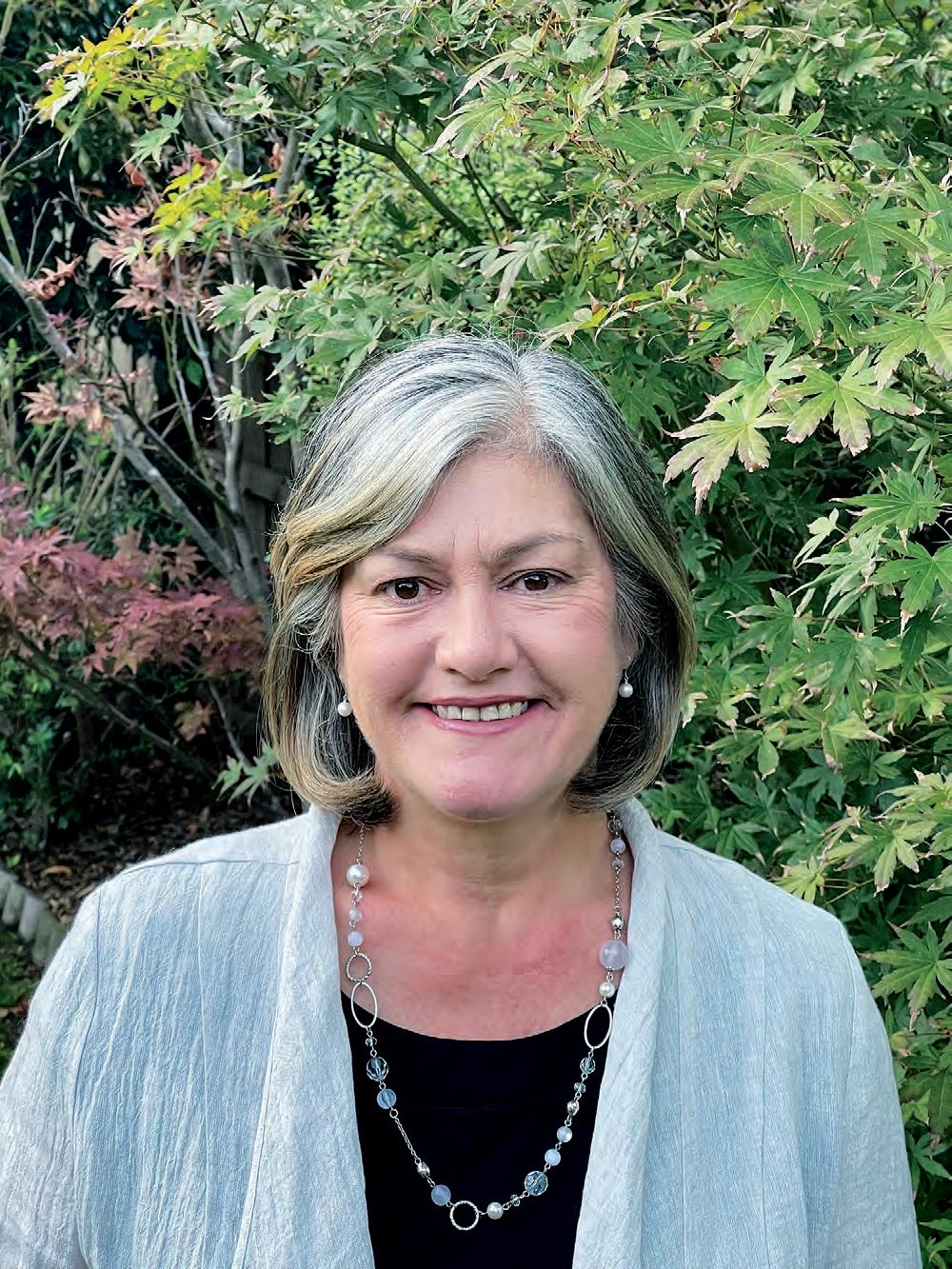
We have a strong wellbeing program in place which is led by Heads of Wellbeing, Heads of Schools, Heads of Houses and tutors. It draws on the five key elements of the Government’s Australian Student Wellbeing Framework – leadership, inclusion, student voice, partnerships and support.
Essentially our wellbeing program across the school is about promoting good mental health, healthy relationships, a growth mindset, a sense of belonging, and resilience. Our students are encouraged to strive for their own personal excellence, safe in the knowledge that we believe every student matters every day.
Knowing our students as individuals helps us to quickly see any changes in their behaviour. Each morning, students spend 10 minutes with their tutor and we’ve found that’s an effective way to ‘check in’ every day and to let students know that their teachers genuinely care about them. In addition, we have a strong team of psychologists available for students who need extra and bespoke support. Many of our staff have also undertaken Youth Mental First Aid accreditation which assists them in
Along with our wellbeing subject, which all students take part in, and covers ageappropriate content, we also offer many parent education programs and parent webinars as we know the importance of the whole community working together when it comes to the wellbeing of children.
Understandably, the return to face-to-face learning and reconnecting with peers after working remotely for lengthy periods of time
Children learn about social interaction through being together and they’ve missed that experience for the past two years.
Some children are anxious, they are rediscovering the skills of engagement, managing conversations and problem solving together. They’re also adjusting to being back in classroom routines – younger children are learning how to sit quietly on the floor with others while older students are adjusting to moving from one classroom to another again. When you combine all these together along with the demands of their learnings it can become overwhelming and impact negatively on their wellbeing.

There has been an increasingly important focus on student wellbeing. Previously we talked more about ‘pastoral care’, which is more about looking after the students. This still happens but now we’re looking more specifically at the actual wellbeing of every student – their physical and mental health – and focusing on the skills and knowledge they need to manage these.
For children to learn at their best they need a clear mind. If they are worried and anxious, this impacts their ability to learn. While we may once have said ‘if the child is happy, they will learn’, we now think more deeply about what ‘happy’ actually looks like and the importance of resilience and understanding one’s emotions. That to feel not ‘OK’ at times is normal, that one cannot be ‘happy’ all the time.
There has been a shift in explicitly teaching wellbeing, having dedicated time each week for the subject of wellbeing. This time includes working through many scenarios where students discuss how they would respond to different situations and why.
You can only have a great program if everyone is on board and believes in the importance of wellbeing and this is why our wellbeing program is so successful. Our mantra of ‘every student matters every day’ is well-known and believed in by students, teachers, the whole school and the greater community.
WHAT HAS BEEN YOUR MOST MEMORABLE MOMENT EITHER AS A TEACHER OR SPECIFICALLY IN THE ROLE OF DEPUTY PRINCIPAL?
I have had many memorable moments but two are particularly special. The first relates to how important the students value wellbeing, respectful relationships and their desire to learn more. In my first week of returning to Haileybury I was contacted by two Year eleven students who asked if they could meet with me to discuss wellbeing. They came to the meeting armed with a list of things they believed, as a school, we could do better and ideas of what we could implement.
am I going to make smile today? These are two brilliant messages which tie into our Respectful Relationships and Consent values of Honesty, Trust, Respect, Empathy and Kindness.
Another big highlight for me has been developing Haileybury’s Respectful Relationships and Consent program and collaborating with our student leaders on the content and the best ways to deliver the messages to their peers. Our students have played a critical role in helping to shape the program. Working and collaborating with them on such a critical program has been an incredibly rewarding experience, professionally and personally.
SUB HEADING
Body copy - no indent
Body copy EM
These sessions help our students learn about emotions and values and develop strategies to build and manage their own positive wellbeing. They learn the importance of relationships and what respectful relationships look like and how to build them. Of course, all this is done in the context of age-appropriate topics and knowledge.
I think another evolution in student wellbeing has been the recognition that it’s important to listen to what the students themselves want to know. As adults, we think we know what to teach but our students’ voices are so important and so we listen carefully to what they tell us they need to know.
HAILEYBURY WON THE BEST STUDENT WELLBEING PROGRAM AWARD AT THE AUSTRALIAN EDUCATION AWARDS IN 2021, WHAT MAKES THE WELLBEING PROGRAM AT HAILEYBURY SO SPECIAL?
For a wellbeing program to be successful it has to be a whole school approach and it has to be championed and valued by everyone - I’m very proud that this is the case at Haileybury. The whole school approach starts at the very top with our CEO | Principal, Mr Derek Scott, and flows through to our leaders and to all teachers.
This empowerment of our students and their desire to be involved in change encourages me every day in the work I do. We are always looking for opportunities to highlight wellbeing and respectful relationships and positive examples of that. Recently Eddie Betts came to speak to our Years 5 to 8 students - even students at our Haileybury Rendall School in Darwin listened to Eddie’s story and message via Zoom.
Eddie told a powerful story with two clear messages: make the uncomfortable comfortable
Haileybury is heavily focused on staff wellbeing. We have Deans of Staff and we also have Growth Coaches for staff to access through our Employee Assistance Program (EAP). We offer additional leave over the festive season and prior to Melbourne Cup Day. We also have a wellresourced team of human resources professionals to support staff and the school offers employees the opportunity to undertake professional development at least twice a year. A Staff Welfare Committee oversees programs and initiatives focused on staff wellbeing and there is a genuine care for our colleagues. I think one thing we do very well is check in with each other and look out for each other. EM
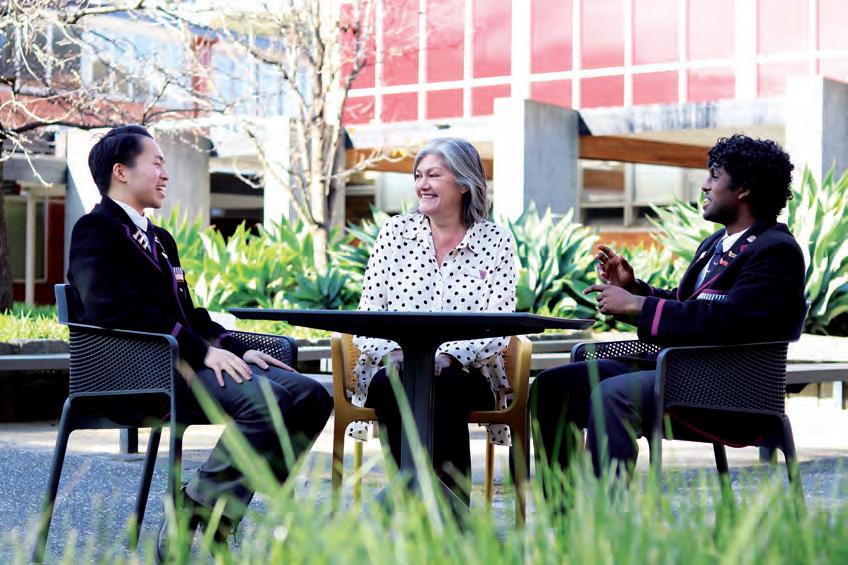
For further information visit,

the creation of the easy-to-use DDJ-200 smart DJ controller. The DDJ-200 is the best beginner controller on the market and will not just inspire students to DJ, but give them a deeper understanding of music theory.

distributed by

your
musical potential with
DJ
your
musical potential with
DJ






















THE REVISED AUSTRALIAN CURRICULUM WILL BE AVAILABLE TO TEACH IN SCHOOLS FROM 2023. WHAT ARE THE NEXT STEPS OF IMPLEMENTATION AND WHAT DO THESE CHANGES MEAN FOR TEACHERS AND EDUCATION PROFESSIONALS AT A TIME WHEN STAFF ARE ALREADY STRUGGLING WITH HEAVY WORKLOADS? EDUCATION MATTERS FINDS OUT.

Version 9.0 of the revised Australian curriculum was endorsed on Friday 1 April 2022 when commonwealth, state and territory Education Ministers agreed that the Australian Curriculum Assessment and Reporting Authority (ACARA) met the key objectives to refine, realign and declutter the curriculum, with a focus on reducing content in primary years and lifting quality.
“The key word was decluttering,” says de Carvalho. “Teachers also felt that they were, particularly at primary level, skating across a curriculum that was a mile wide and an inch deep and they felt pressure just to rush on to the next topic. So decluttering allows them to teach for deeper conceptual understanding and grasping of key concepts before moving on was another objective.”
“It was also important to look across

different subjects - mathematics, science and technologies – at the connections. In the previous curriculum, subjects like science were introducing students to mathematical concepts that they hadn’t even learnt in the maths curriculum because they were developed at different times the first-time round,” de Carvalho continues.
The first Australian Curriculum was launched in 2009, after ACARA was established in 2008. When ACARA was reviewed in 2015 it was agreed that the Australian curriculum would be reviewed every six years - this is the first cyclical review. Ministers gave ACARA terms of reference in 2020 and the review was





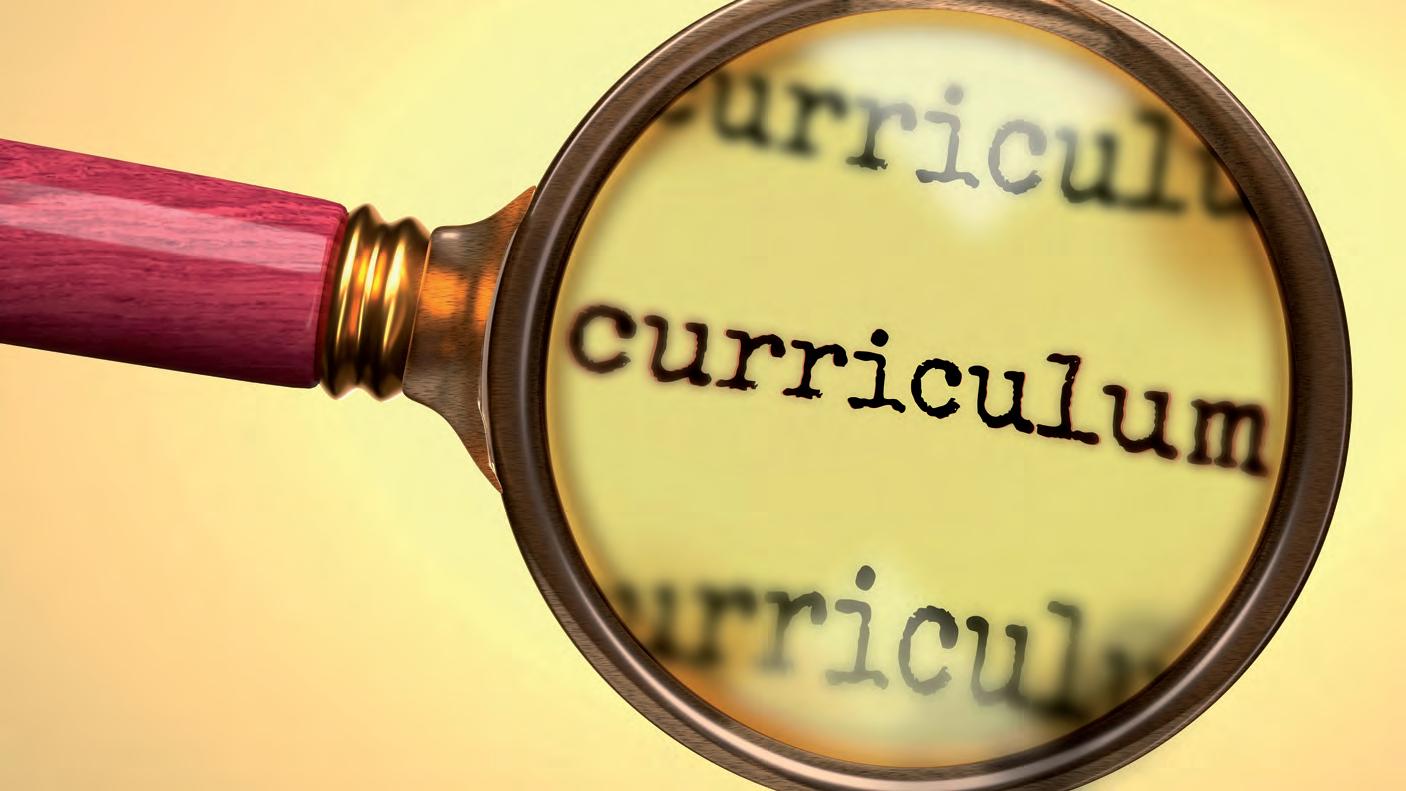
conducted in accordance with those terms of reference. This is also the first time that the Australian Curriculum has been reviewed in full, across all subject areas.
CONSULTATION WITH TEACHERS ACARA had been working with consultation groups on the refinements in order to get a consultation draft together for about 12 months before the revisions were released for open consultation explains Sharon Foster, Executive Director, Curriculum, ACARA. “We would engage teacher reference groups to work with us to give us their feedback and to test ideas with them. That was a powerful part for us - hearing the teacher’s voices all the way through. We also had curriculum reference groups with representatives from each of the jurisdictions and sectors who were specific to a particular learning area and subject. This was

The consultation was open for 10 weeks and approximately 6000 online surveys and 900 email submissions were received. ACARA then engaged with the University of Queensland’s Institute for Social Science Research who undertook an independent analysis of the data. “We took that onboard to work through further refinements of the consultation draft to reach the version which then went through to the board and then finally was endorsed as approved curriculum,“ continues Foster.
It’s widely known across the industry that workloads and teacher shortages are at an all-time high. This crisis looms large and was recently addressed with the release of the Teacher Workforce Shortages Issue Paper on 8 August 2022. The paper sets out the nature of the problem and responses to date, aiming to prompt discussion on priority areas of focus and potential actions to address teacher shortages. With this in mind, some may consider this bad timing, that a new curriculum must now be rolled out, across all subject areas nationally.
“It is perhaps not well understood that the launching of a new curriculum is not the end of the work. For teachers in schools, it’s the start of
(IEU), NSW Branch.
When a syllabus is launched it then must be turned into a programme at school level. This involves developing a teaching scope and sequence which sets out the order of the syllabus content and the amount of time spent on each section. Teachers then break it down even further into programs that will direct their work with students over the weeks of a term, and then again into lessons, explains Yewdall.
“Teachers welcome the decluttering of the curriculum at the national level, and at the state level where that applies. However, it is essential to recognise the intensification of workload that accompanies such changes, particularly when multiple syllabuses are released in close proximity to each other,” says Yewdall. “It’s really important for teachers to have appropriate levels of support and an appropriate timeframe for implementation.”

ACARA is working on provision for teacher support, and the individual states will also consider current issues when setting timelines for implementation explains Foster.
“Some states will decide to phase it in, they

and secondary school second. Similarly, to the way they implemented the Australian Curriculum the first-time round,” says Foster.
ACARA is currently working on creating new work samples for version 9.0. “These play a particular role in helping teachers unpack what the achievement standards look like,” says Foster. ACARA will also publish new illustrations of practice, including case studies demonstrating how teachers have gone about implementing the changes. “We also know that the jurisdictions will develop up quite explicit information that deals with their policies and requirements to support their teachers to develop the curriculum. ACARA staff will also be running some professional learning sessions to help teachers unpack and understand the intent of the curriculum,” adds Foster.
“From our perspective this curriculum sets high standards that is for what students have to learn no matter where they are across the country. Every student deserves access to a high-quality curriculum, and we think we’ve now given them that,” says de Carvalho. EM
For further information and to the view the curriculum digitally visit, v9.australiancurriculum.edu.au

With over 30 years of teaching and leadership experience, Dr Janelle Wills maintains a strong commitment to continued learning that enables her to remain both informed and innovative in her approach. Throughout her career, she has been adept at linking theory with practice, resulting in the development of significant initiatives both within schools and at a sector level.

Effective teaching is a complex but critical endeavour. Two of the world’s leading researchers on human performance and expertise, Anders Ericsson and Robert Pool, highlight 3 types of practice that people engage in across all fields that lead to varying levels of improvement in performance: naïve practice, purposeful practice, and deliberate practice.
Naïve practice, according to Ericsson and Pool (2017), involves simply practising or doing repeatedly and expecting to get better at it. This works when you have never engaged in or are relatively new to the skill you are practising. But, for something as complex as teaching, practice of this nature will only take us so far before our skill level plateaus.
Purposeful practice, according to Ericsson and Pool (2017), consists of practice that meets four criteria:
1. Defining clear, specific goals.
2. Staying focused.
3. Receiving feedback.
4. Getting out of one’s comfort zone.
Purposeful practice allows people to continue to improve beyond what is possible with naïve practice, but it still has limits. The best approach for the development of expertise is deliberate practice.
Deliberate practice involves two kinds of learning: improving the skills you already have and extending the reach and range of your skills (Ericsson, Prietula, and Cokely, 2007). It includes the criteria for purposeful practice, but
it also includes additional characteristics. What are these additional characteristics and most importantly, how are they operationalised in terms of building expertise in education?
Esteemed researcher and author, Dr Robert J. Marzano, and his colleagues (Marzano, Rains and Warrick, 2021, p. 12) propose 6 overt steps that can be taken to build teacher expertise.
1. Develop or utilise an instructional framework that is based on a researchvalidated approach to teaching, such as The New Art and Science of Teaching (Marzano, 2017). In The New Art and Science of Teaching, Marzano identifies ten design areas within three categories of teaching – (1) feedback, (2) content, and (3) context – that form a road map for F–12 teachers’ lesson and unit planning. Within these ten design areas, Marzano explores 43 elements (categories of instructional strategies that contain more than 330 specific classroom strategies) educators can implement for optimal student learning.
2. Have teachers’ self-rate on the framework and set growth goals for 2 or 3 elements that are opportunities for improvement. Ensure these elements and their associated strategies represent a stretch for the teacher or are slightly outside their comfort zone.
“Deliberate practice involves two kinds of learning: improving the skills you already have and extending the reach and range of your skills (Ericsson, Prietula, and Cokely, 2007). It includes the criteria for purposeful practice, but it also includes additional characteristics.”
3. Have teachers focus intensely on the growth goal areas. Intense focus includes recording progress, noting the strategies attempted and the results, keeping anecdotal evidence of improvement over time (such as artifacts of practice), and reflecting on continual growth and development.
4. Provide teachers with continual feedback on the growth goal areas from a coach who has a better understanding of and performance in the element on which they are working. Over time, help teachers adjust their practice to ensure they continuously improve on the selected element.
5. Ensure teachers internalise the instructional framework. It should become their mental representation of expert teaching.
6. Over time, have teachers change and adjust their goals such that they work on the entirety of the instructional framework. These action steps are effective at the systems level for the staff of an entire school, as well as at the individual level with one teacher to build instructional expertise to ultimately impact on student learning. EM


For further information visit, www.hbe.com.au
More than 30 years of learnings
Providing heavy-duty cleaning solutions for surfaces across the education sector, Comac floor scrubbers are durable and built to last.







“Looking back on my time as a principal I wish that we could have had a ‘Spotify’ for professional learning,” says Dave Faulker, EC Premium Co-Founder. “So, in 2022 we finally decided to build it ourselves.”
Since formally launching at the Queensland Secondary Principal’s Association in May of this year, EC Premium has spread rapidly across Australia, providing subscribing schools with
unlimited access to thousands of professional learning courses and pieces of content from some of the world’s best K-12 providers.
With the platform, learning can be very easily differentiated and aligned to the many needs and wants of a school team. EC brings more than a decade of real-world knowledge around quality PL to their digital platform, after more than a decade of experience
running professional learning programs for organisations across Australia including The Academy (VIC), Professional Learning Institute (TAS), Orbis (SA), the education departments of NSW, WA, ACT, QLD, and Catholic and Independent networks.
EC Premium offers a powerful new professional learning solution to schools across Australia. Once subscribed, schools receive their own customised online professional learning platform, tailored to the school’s own branding. The platform is instantly populated with thousands of K-12 focused professional learning courses, with the option to add any of more than 100,000 wider adult learning courses from the larger Go1 learning library, all for the same flat subscriber fee.
Within the EC Premium portal each user has their own personalised login and learning journey, with content tailored to them. EC’s Education Success Managers work with each school to refine playlists to support alignment with strategy, assist with content surfacing and curation and can respond quickly to questions that arise (customer service is 24/7). Schools can also create their own professional learning content in the platform to share internally. To support differentiation, content is made up of videos, podcasts, and written blocks ranging in length from five minutes to five hours.
EC’s Chief Learning Officer Madelaine
Scott-Jones brings her three master’s degrees in education and experience as a teacher to her work leading the curation of the professional learning content in EC Premium; “We are thrilled to have brought together some of the best PL providers in Australia and around the world and love that the library of content is growing every week,” says Scott-Jones who is excited by courses such as leadership from Harvard University, literacy from the Story Factory, play-based learning with Parent TV’s Maggie Dent, restorative practice with Real Schools, child safety with the Cyber Safety Project and an exciting new partnership with ACEL.
Scott-Jones stresses the importance of helping to share new voices across Australia’s schools, “I just finished the Maths courses from Michaela Epstein from Maths Teacher Circles and loved them, and the new content coming out of the Wellbeing Distillery I am already applying in my own life,” she says. The EC team are committed to bringing in the names and voices that Australian educators love, resulting in content blocks from Dylan Williams, Tracy Ezard, Joanne McEachen, Michael Fullan, Kath Murdoch, Andy Hargraves and the late great Ken Robinson to name a few.
Aaron Tait and Dave Faulkner are the co-founders of EC and have dedicated their careers to creating and growing high impact education solutions.

Aaron Tait’s experience running schools in African townships, and Dave Faulkner’s career as a teacher and principal in some of Australia’s most remote communities catalysed their respective passions for doing what they can to help every child access a quality education. ”I’ve agreed for a long time that your post-code should not determine your future,” says Faulkner. “EC Premium was created from the idea that every teacher in Australia should be able to access quality professional learning, anytime, anywhere. Particularly now when we see
the challenges for teachers, support and easy to access upskilling is more important than ever.” Tait, a Cambridge graduate with research and efforts focused on scaled social impact solutions is quick to stress the power brought by the Go1 technology; “EC became part of Go1 in 2022 as we wanted to be part of one of the fastest growing learning companies in the world, a proud Australian technology success story and the home to the world’s largest adult learning library.” With 14 Go1 offices across the world, EC by Go1 is an Australian idea that will be spreading across the world in 2023. “We are proud to have launched at home in Australia, and in time to share the best Australian PL voices with the world,” says Scott-Jones.

With the subscription price of $150 per staff member equating to less than the cost of half a day of teacher release, schools across the country are signing up to launch the platform now to full effect in 2023. Faulkner stresses; “EC Premium hasn’t been built to be your whole PL solution, instead it’s just a very compelling part of your solution to continually improve the practice of staff across your school.” = EM
For further information visit, ec.inc
We know what makes staff want to stay, from the right professional development to open, honest communication. And with so many Australian schools struggling with attraction, retention and advancement, we have brought together our tried-and-trusted tools in our new suite of software to help you create a happy, harmonious school.
The result is our Staff Management subscription, offering all you need to hire, train and retain the best staff.
Find out how it works: tes.com/staff-management
Dr Carly Steele is a Lecturer and Early Career Researcher in the School of Education at Curtin University, Perth. She completed her PhD at the University of Melbourne in 2021 which explored the role of language awareness and the use of constrastive analysis for teaching Standard Australian English as an additional language to Aboriginal and Torres Strait Islander students in primary school.

Recently released census data shows over 250 ancestries and 350 languages (ABS, 2021). Over 5.5 million people use a language other than English at home and 850,000 people report they do not speak English well or at all (ABS, 2021). Often not recognised in this census data are Aboriginal and Torres Strait Islander peoples who speak traditional languages as well as newly formed Indigenous contact languages such as Aboriginal Englishes and Kriol (Steele & Wigglesworth, 2021). Despite Australia’s highly diverse population, our education system measures student success according to Western linguistic and cultural systems which calls into question the fairness of these assessment regimes for its diverse students, particularly First Nations students. In our newly published paper (Steele, Dovchin & Oliver, 2022), we argue that the languages and modality of classroom assessment tasks need to be expanded to be more inclusive and fairer for all.
Current school assessment practices are English only. They do not adequately recognise the knowledge that speakers of other languages possess. Using the example of a bilingual child who speaks two languages. If judged in each of these languages separately, their knowledge could be considered deficient. If their knowledge and understanding is only judged in English, the assessment wouldn’t give a true indication of what the student knows. This wouldn’t be a fair or accurate assessment of the child.
We can make assessment fairer by allowing students to use other languages to demonstrate their knowledge and understanding. This
doesn’t mean 10 different assessments for students who speak 10 different languages. It means allowing students to use all the linguistic resources that they have available to them to communicate so teachers can accurately judge their knowledge and understanding of the topic being assessed. This is a translanguaging approach to learning.
“Translanguaging” is a term used to describe the ways individuals will use all their available meaning-making resources to communicate - such as signs and languages (Cenoz & Gorter, 2022). In a classroom that uses a translanguaging approach to learning, this practice is not only allowed, but actively valued. It sends the message that all languages and therefore all children, are welcome in this classroom.
Some would argue that teachers would not be able to understand what students are saying. We argue that it provides teachers with an opportunity to engage in meaningful dialogue with children to learn about their social, linguistic and cultural backgrounds. This will help teachers to see what these students are capable of in their own language/s.
Others confuse the messaging of translanguaging and say that English is necessary for success in society. We are not suggesting that students are not taught English, of course, learning a new language is a wonderful thing. We are suggesting that the best way of teaching English is through an approach that recognises and values students’
Current school assessment practices are English only.
Current assessment practices are not only English only, but they also favour written forms. For example, in the current system, a student’s ability to produce a Western style narrative or persuasive text is a key measure of academic success. But this is only one mode and style of communication, students from other language backgrounds use diverse modes of communication to express themselves which includes nonverbal communication. Judging these students with this narrow measure is unfair and does not adequately allow them to demonstrate their knowledge and understanding.

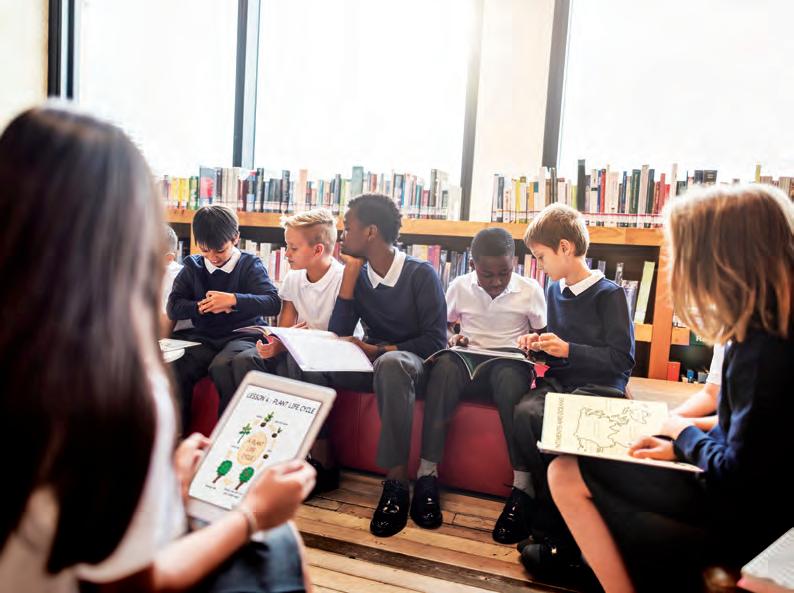
We need to expand the methods of assessment beyond dominant written forms. Students from other cultural backgrounds, including many First Nations children use a range of modes of communication, including verbal language and forms of non-verbal communication such as signs, gestures, drawings and symbols. Inge Kral and her colleagues (2019) provide an excellent example of this in their research where a group of young
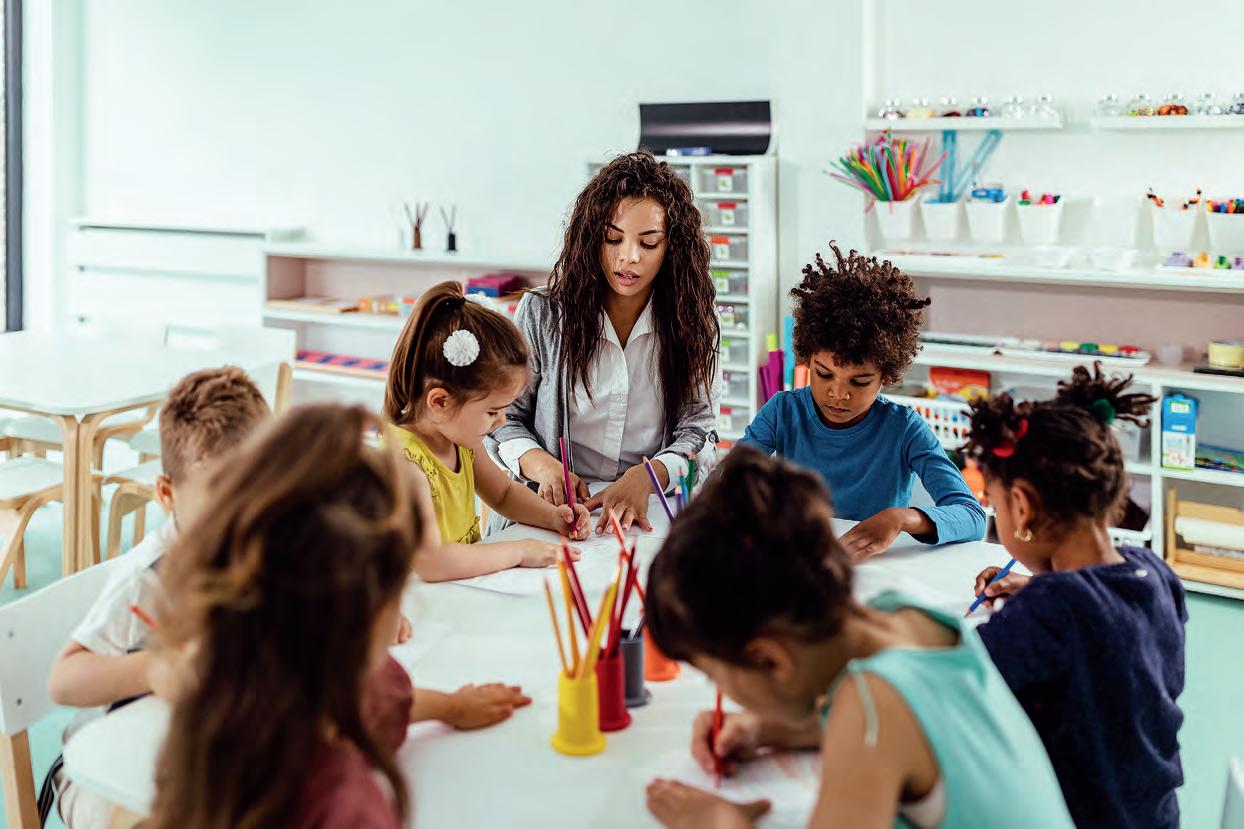
they recorded into film. These films were highly innovative as they mixed traditional icons with contemporary symbols. Why can’t these creative practices be used and valued in assessment?
with purpose and creativity and this needs to be recognised. Assessment practices should be expanded to include multiple languages and many
We
We’re passionate about fostering careers in STEM, so together, WiseTech Global and Grok Academy are making Grok Academy’s Learning platform available for free for all Australian schools, teachers and students in 2023. Don’t miss out on this fantastic learning resource.

Smooth Mathematics targets the fundamental topics students have found difficult.
MATHS SCORES ACROSS AUSTRALIA ARE IN SHARP DECLINE. THIS, COMBINED WITH PROFESSIONAL FATIGUE, IT’S IMPORTANT TO REMEMBER THERE ARE SEVERAL RESOURCES AVAILABLE TO TEACHERS.
The most recent results from the OECD’s program for international student assessment ranked Australia 29th out of 38 countries - a slip from 11th place 20 years ago. “You are, on average, 12 months behind now as an Australian student than you were 20 years ago,” commented The Hon Stuart Robert MP, Former Acting Minister for Education and Youth, when the results were released earlier this year. “No one can consider that acceptable,” he continued.
Casio Education Australia provide two valuable resources designed to build confidence and comfort in year six and year seven students as they move from primary to secondary mathematics.
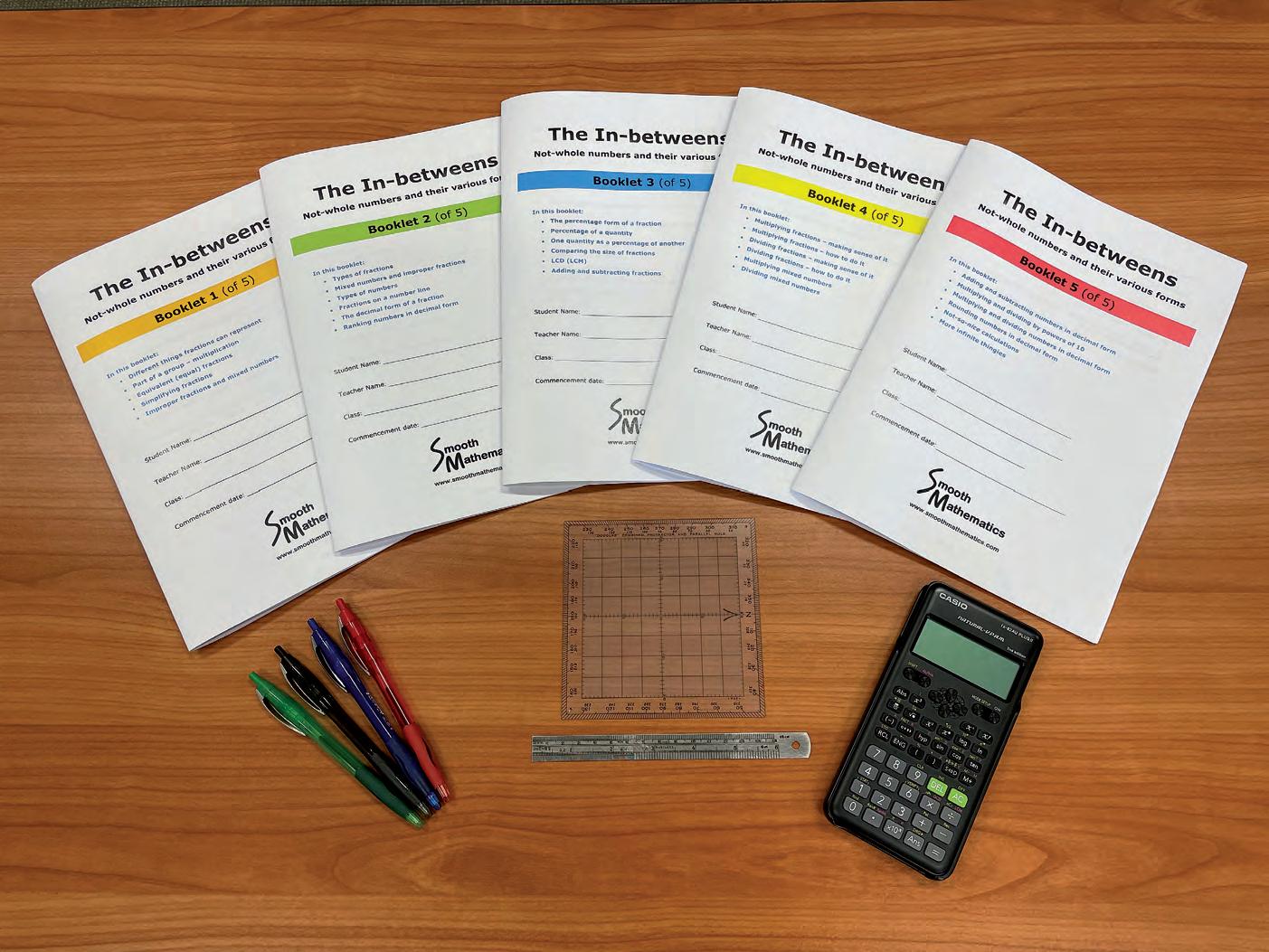
Smooth Mathematics is a hybrid printable/online supplementary resource,
which targets the fundamental topics students have historically found difficult and Numerical Acumen helps students develop the mechanical basics of a mathematical mind.
SET YOUR STUDENTS UP FOR YEAR SEVEN TO 10 AND BEYOND Developed by seasoned maths teachers, these resources provide teachers and tutors with interactive classroom activities, designed to supplement the Australian mathematics curriculum.
Both resources are specifically designed to target the core of mathematics learning – setting students up for success in either general knowledge, revising and/or mastering the basics with or without using a calculator. Both resources also aim to set a level playing
field where students can learn in any environment they feel comfortable – whether that be selfpaced, competitive, online or printed – the programmes are designed to boost student confidence.
Countless students need additional mathematics support as they move from primary to secondary school, and it’s often difficult to address the traditional difficulties of teaching and learning certain topics.
Enter Smooth Mathematics.
Smooth Mathematics was designed to bridge the gap between primary and secondary mathematics – targeting the topics students often find the most difficult to grasp, or, master, or perhaps always show little confidence (for example: fractions, decimals & percentages, geometry and more).
Why certain topics? All Smooth Mathematics topics have been pinpointed to supplement the mathematics curriculum in the key areas known for poor student performance.
At its core, this resource aims to support teacher delivery as well as student learning by
concise explanations and carefully chosen practice questions.
• Online quizzes and problem-solving sets where each student’s scores are logged, and teachers can mark.
• The inaugural topic focuses on fractions, decimals, and percentages, with geometry to follow.
• Improving students’ accuracy with mental calculation.
• Improving students’ confidence in deciding when and when not to use a calculator.
• Helping students develop the mathematical basics of a numerical mind through online quizzes and instructional booklets.
Like Smooth Mathematics, Numerical Acumen offers a hybrid online and paper-based options to fit all learning environments, with access to the online game-like practice system, plus the option for teachers to track each student’s progress.
Each year Numerical Acumen offers a free longterm challenge, spanning two terms, as these skills are best developed steadily over an extended period. CASIO Education achievement medals are available to at least three students in every class that takes part. Other awards for various class and school levels are also up for grabs.


To learn more about the challenge please visit: www.numericalacumen.com/the_challenge
These resources are freely available through Casio Education Australia’s Prime Schools Plus program. EM
For further information please visit, www.casioeducation.com.au
Dr Josh Ambrosy is a lecturer in the Institute of Education, Arts and Community at Federation University Australia. Before his academic role, Josh was a school teacher working in a range of government, independent and catholic schools. He teaches a variety of courses at Federation University Australia, including outdoor education and science education curriculum studies. Josh’s main research interests focus on different ways teachers and schools can structure education to better suit the needs of their students. He typically works with artsbased methodologies.

I recently needed to travel to the Melbourne CBD for a meeting. When walking through the city, I was pleasantly surprised to see so many groups of secondary school students (of whom I estimated the majority to be around year nine). I think I was most excited to see these groups of students and teachers out and about again, as I have spent much of my time in the last few years thinking about the significance of such experiences in my recently completed PhD (Ambrosy, 2021) that focused on how a school teaches year nine differently. It is from this empirical study that I offer the following commentary.
Year nine is a year that is full of challenges. These challenges are partly due to the concurrent life stages of adolescence and puberty (Bahr, 2017) that year nine students experience. In response to these challenges, a largely unrecognised group of schools, with a noticeable epicentre in Victoria (King, 2017), have chosen to implement specific programs that cater to the developmental needs of these students. Pivotal to the success of many such programs is a shift away from a traditional model of schooling to one that incorporates inquiry-based learning through a curriculum that connects students to real-world problems and experiences.

Year nine programs typically mobilise a curriculum that is transdisciplinary and connected to the real world through experiences. However, the implementation of such programs often comes with significant challenges. Likely two of the most pressing implementation issues are: how they prioritise the time needed for
teachers to accompany students on experiences; and, how to fund such programs, in particular for schools working in the public system without, in the words of one of the teachers I interviewed “pushing, the parents, every 10 minutes, for another 10 dollars”.
I offer schools the following recommendations based on my research.
1. Year nine programs work because they shift the focus from learning for future employment or study purposes. It is recommended that teachers designing year nine program should first consider their local contexts and problems of practice and design programs that are specific to their cohorts and broader school communities. In other words, one ‘size’ does not fit all.
2. For many year nine programs an integrated curriculum is the backbone of their program. These structures can help teachers to develop programs that transcend learning areas and better relate to experiences that are multi-disciplinary. To help enable this structure, schools should staff year nine programs with multi-disciplinary teams and consider how the timetable can enable regular time beyond the school gates without the need to cover teachers.
3. The success of many year nine programs rely on dedicated teachers with specific skills. It is recommended that schools are intentional in their staffing of year nine programs and that teachers are provided with adequate resources and additional time to help with the demands of such a program. EM
Educators’ own perspectives on delivering education in 2022
Education is changing fast: including how we plan, structure, and deliver it, as well as how we engage with students and colleagues in an increasingly technology-driven world.

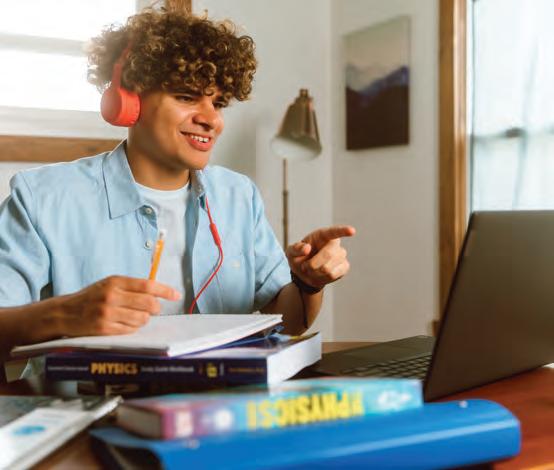
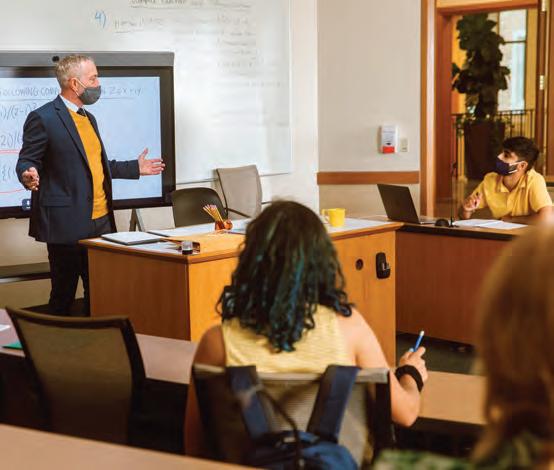
There’s talk of “the new normal” for the wider world. But for education, nothing is the new normal. We are writing the future of education as we go. As nerve-wracking as it can seem, it’s also exciting and full of opportunity!
This report deep dives into the practices, opinions, and learnings of education leaders around the APAC region to extract their perspectives on:
• Pedagogy: Current teaching and learning actvities
• Curriculum: Planning, structuring and reviewing learning content in 2022
• Institutional Structure: Functioning with internal and external stakeholders.
Scan the QR code
THE RELEASE OF THE AUSTRALIAN INSTITUTE FOR TEACHING AND SCHOOL LEADERSHIP REPORT HAS MADE IDENTIFYING CULTURAL INCLUSION IN THE CLASSROOM AND REVIEWING TEACHING PRACTICE A REQUIREMENT. DR TRACY WOODROFFE DISCUSSES WHAT TEACHERS CAN DO TO ENSURE PROFESSIONAL DEVELOPMENT IS RELEVANT TO THEIR CLASSROOM PRACTICE.
Primary, Secondary, and Tertiary. The majority of that time has been spent in the classroom teaching and in associated leadership roles. She is a lecturer at Charles Darwin University who coordinates, develops and delivers teacher education units about teaching Indigenous learners and the importance of Indigenous knowledge in education.
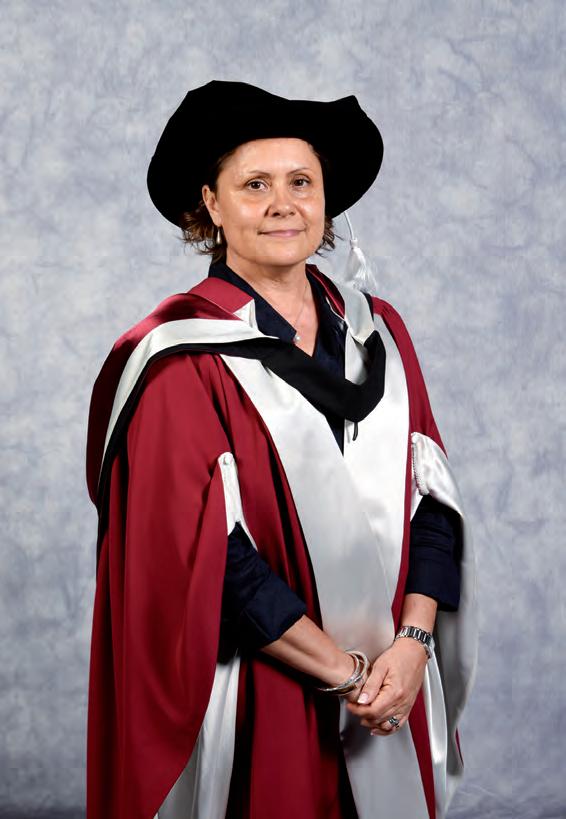
When busy with work and the general hum drum of every day, we can find it very difficult to make time for ourselves. The idea that we should spend even more time on work doesn’t always sit well, and teachers can already feel overwhelmed with the happenings in their classroom. However, as teachers, we are expected to participate in a certain amount of professional development to enhance our practice, perhaps even apply for a promotion, and meet the Australian Professional Standards for Teachers.
With the release of the Australian Institute for Teaching and School Leadership (AITSL) report on Building a Culturally Responsive Australian Teaching Workforce, being able to identify cultural inclusion in the classroom and reviewing teaching practice becomes a requirement. AITSL will be releasing resources in the coming months. These resources will ‘help teachers understand their level of cultural responsiveness and improve or enhance their practice’. According to an AITSL communication dated 26 July 2022, the resources and the work done in the Cultural Competency Project are a response ‘from the profession to be better
equipped to provide culturally safe learning environments for Aboriginal and Torres Strait Islander young people and to teach about their histories and cultures’. This statement indicates that teachers may still feel underprepared to teach Australian First Nations students and First Nations content, hence the need for the resources.
So, what can teachers do to ensure professional development is as relevant as possible to their classroom practice?
Teachers can be researchers in their classrooms, not researching the children but examining themselves. Teachers as researchers is not a new concept, but often, teachers’ time gets taken up with other seemingly more urgent matters. Good teaching must include time management and balancing the act of teaching with developing the art of teaching. Taking time to reflect on practice and then making time to try doing something different is the start of an action learning process. Plan, Act, Reflect and Learn are the critical components of an action learning cycle. To begin the action learning cycle, you must start with reflection. Reflection may be a sticking point. Which aspect of
cultural responsiveness, cultural competency or cultural safety should you reflect on? There are times when we don’t know what we don’t know. Initial questions might help, such as – what do you think you know already? What resources could you use to find out more about the concepts? How are they relevant to you as a teacher, your classroom, and your practice? Reflecting will help you focus on areas you are unsure of and perhaps assumptions that you hold about the concepts that are not necessarily correct.
Using a mix of your reflections and identified areas of potential learning combined with AITSL resources, when released, will provide you with a good starting point for further developing your skills and knowledge through an action learning research cycle to enable you to be confident in your cultural responsiveness. Once you have reflected and identified an area of potential learning to work on, planning is next. What are
“Good teaching must include time management and balancing the act of teaching with developing the art of teaching. Taking time to reflect on practice and then making time to try doing something different is the start of an action learning process.”
you going to trial in your practice, and how will you evaluate the outcome? How much time are you going to allocate to the activity? What will success look like? Once the plan is set, you can act on it. During the action stage, you will need to
keep anecdotal notes similar to a learning record. The cyclical nature of the process means that we will reflect further on the outcome before deciding what else to tweak in our practice, and the cycle can start again.
Teaching requires rigorous processes of measurement and adjustment as part of the teaching and learning sequence. The goal is to be the best teacher we can be to provide the best learning for all our students. Providing more resources to assist teachers in being culturally responsive is reasonable, primarily if research and teachers’ sentiments identify feelings of being unconfident or under-prepared. The test will be if teachers access the resources and take steps to be researchers in their classrooms, committing to reflecting on practice and implementing action research as advocates for change and improved educational outcomes for Australian First Nations students. EM
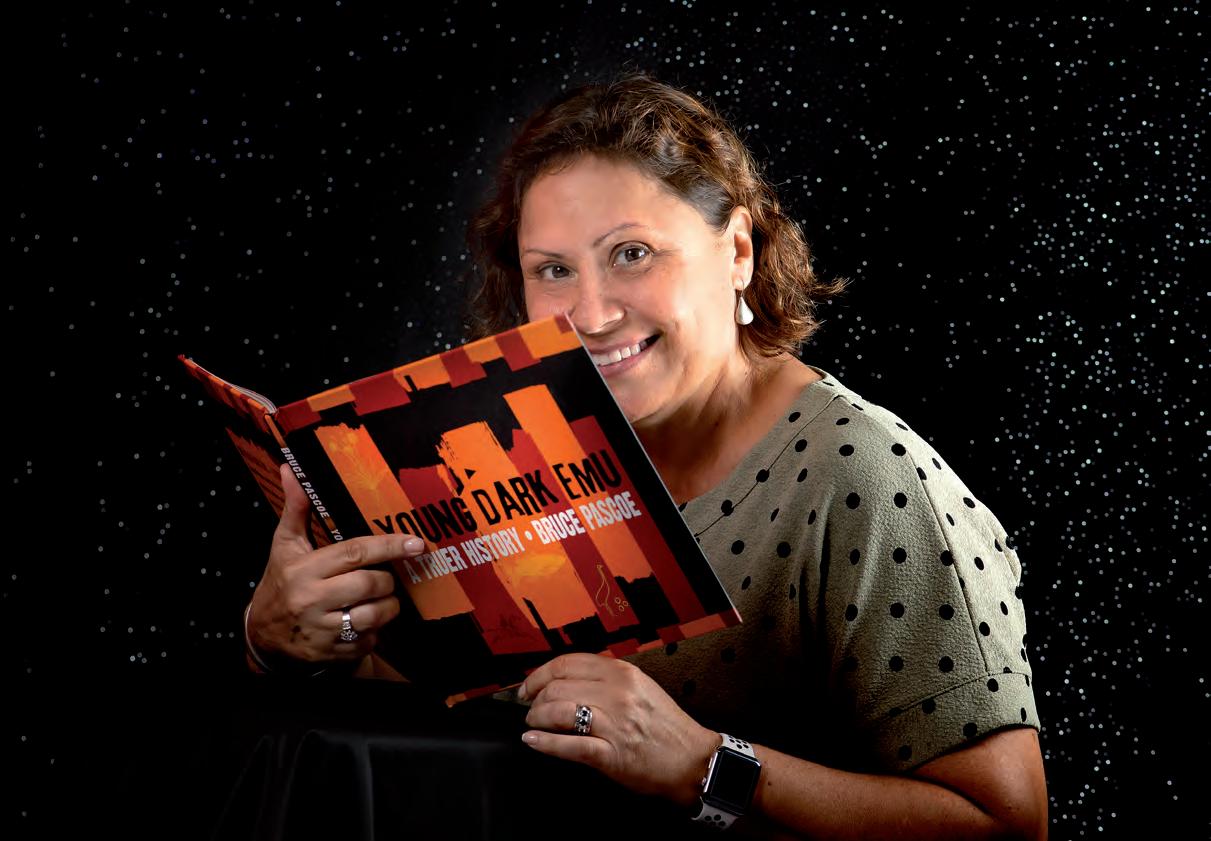
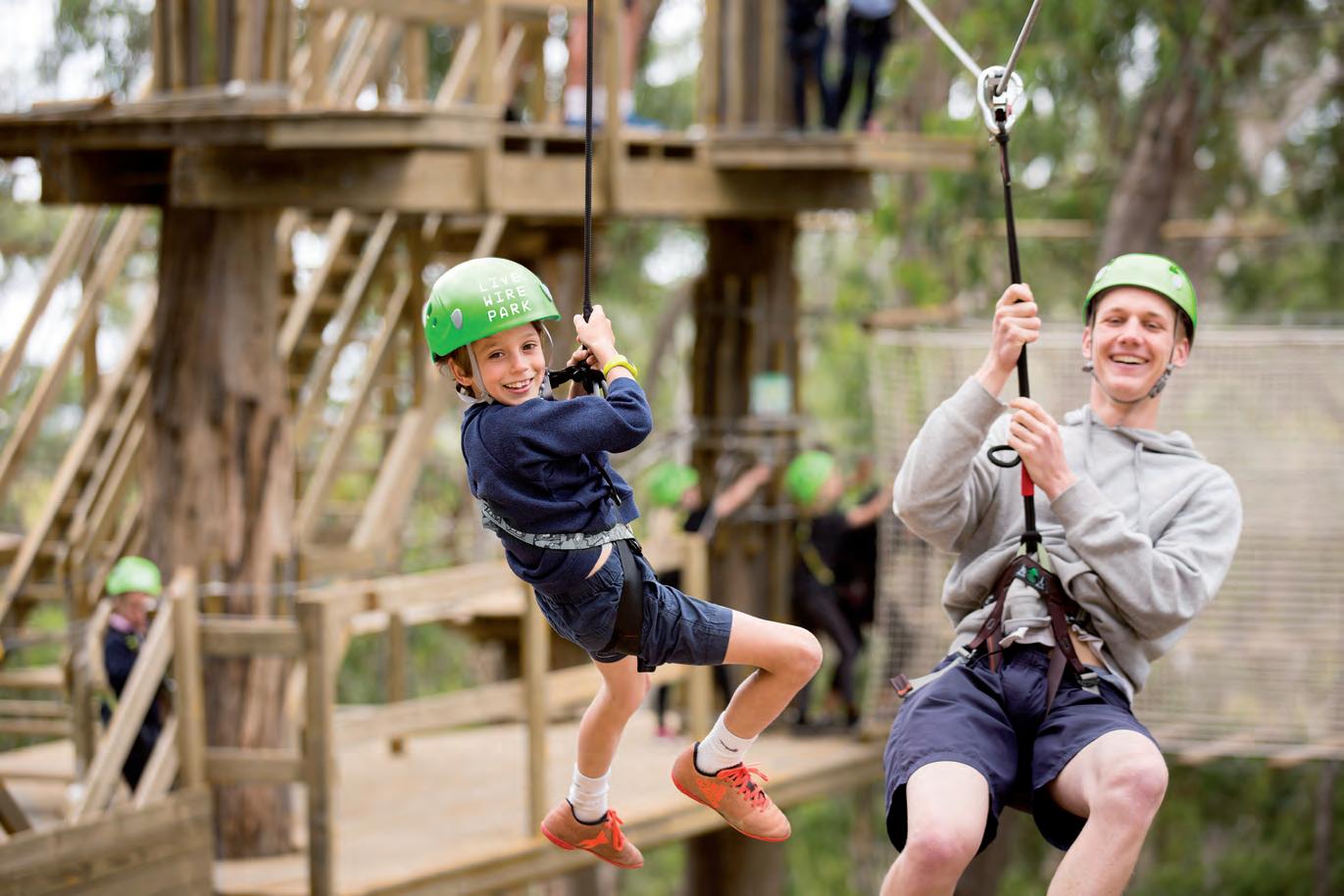
A trip out of school with their peers is the highlight of any student’s calendar. While it may look like the students are just scaling trees, swinging on ropes and plunging down a bungee jump, there’s a lot more going on during the high rope’s courses at Live Wire
building, and teamwork, students will also learn about native flora and fauna and sustainability.
Safe outdoor spaces like Live Wire Park are
how to take turns, to pick themselves up then they fall and to become more independent and self-reliant.
Research paper by Brussoni, Olsen, Pike, and Sleet titled, ‘Risky Play and Children’s Safety: Balancing Priorities for Optimal Child
healthy child development and reviews literature from many disciplines that support the notion that safety efforts should be balanced with opportunities for child development through outdoor risky play.
Encouraging children to try activities they might be a little afraid has also been proven to help them become more confident and selfassured. As well as getting rid of built-up energy and enabling them to become calmer and more focused when they return to the classroom.
The activities are the ultimate group bonding experience, bringing students into a whole new setting. At Live Wire Park children naturally come out of their shells and become more social through playing together, encouraging one another whilst making new friends.
“A great opportunity for kids to put down their screens and reconnect with nature,” reported Prahran High School.
Live Wire Park is Australia’s first outdoor adventure park that is completely powered by nature. Student groups are guided through core sustainability principles and how these were implemented during the building of the park to ensure it had minimal impact on the environment.
These include the parks photovoltaic off grid system and how by harnessing solar energy. The
park uses a 5.4 kW Solar Array which charges a battery bank, which in turn powers the entire park. Along with the parks water cycle management plan and the systems which is in place to capture water on-site, negating the need for mains water. Students also learn about treating waste onsite through self-composting toilets and recycling grey water.
Students are taught about Otway Forest in which the park sits, a temperate rainforest with a dense biodiversity and several species of trees and plants including towering Blue Gum Eucalypts which are over 150 years old. The Live Wire Park crew will discuss the native wildlife including koalas, wombats and kookaburras.
Soak up the beauty and the breath-taking views of the Otway Ranges with the immersive experience of the Canopy Circuit and Spring Circuit. Elevated above the ground amongst the native Blue Gums, this is the perfect way to enjoy Victoria’s rainforests with 120 metres of easy treetop suspended pathway (Canopy Circuit) and a five-zone elevated trampolining net park (Spring Circuit).
The Short Circuit has been designed with children and smaller teenagers in mind. Safe,
education matters secondary
secure and full of fun, the Short Circuit features a range of kid-friendly obstacle courses and suspended treetop trails to excite and entertain. While the park’s experienced instructors are always on hand to help guide little live wires. EM
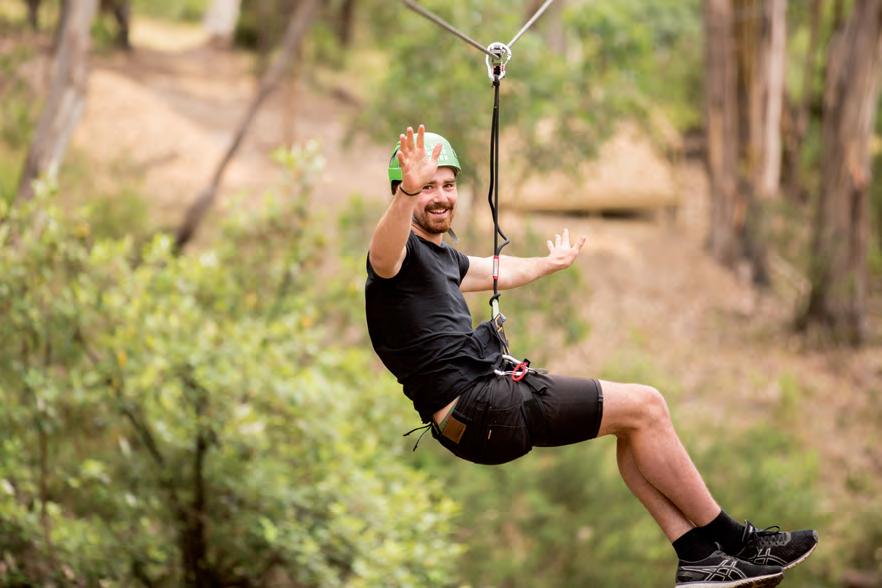
For more information visit, livewirepark.com.au/school-programs
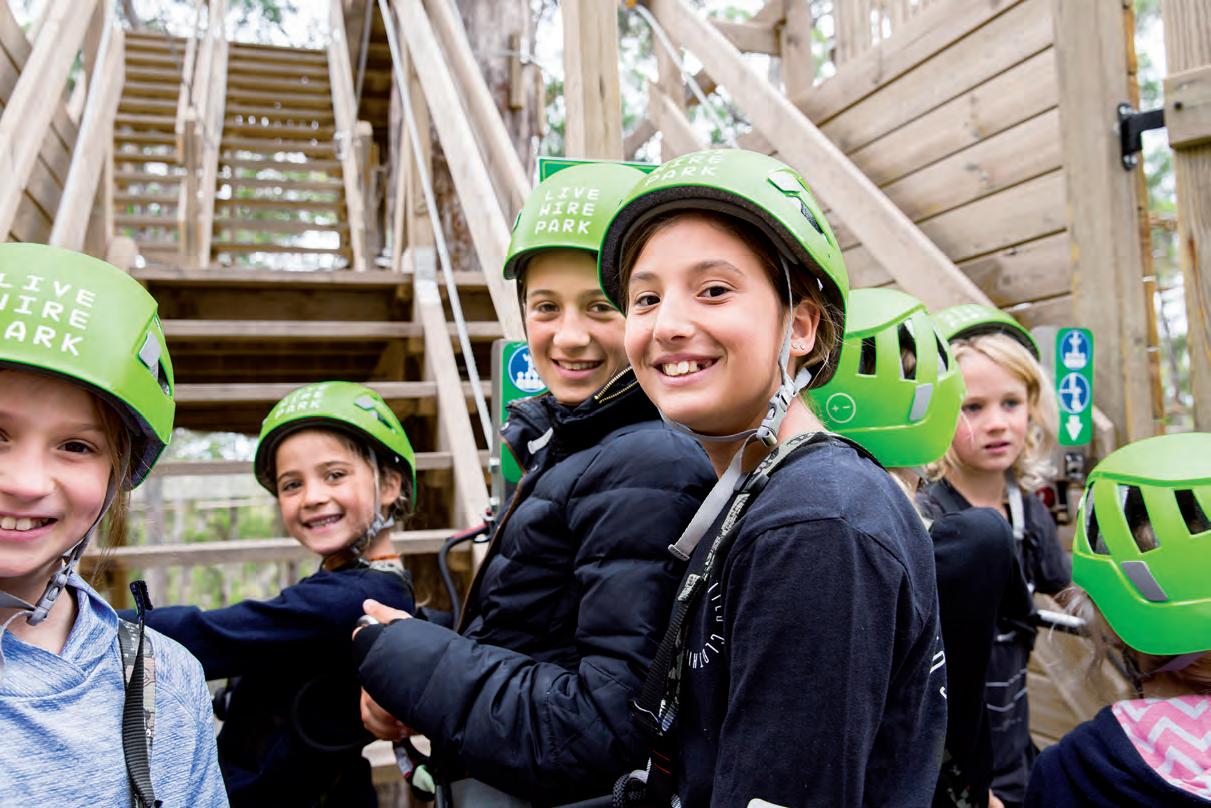
With a vision to become the leader in cleaning innovation that empowers customers, Godfreys Commercial creates forward-thinking solutions that make the way we clean more effective and efficient. Godfreys Commercial cleaning offering includes equipment used to maintain both indoor and outdoor surfaces, parts, service and maintenance to help ensure superior cleaning performance. Godfreys Commercial proudly provides clients with industryleading brands, including Pullman and exclusive international third-party brands Comac and Rosemor.
Godfreys Commercial was established
to provide innovative, exclusive branded products via direct sales channels and specialist commercial floorcare solutions for key segments.
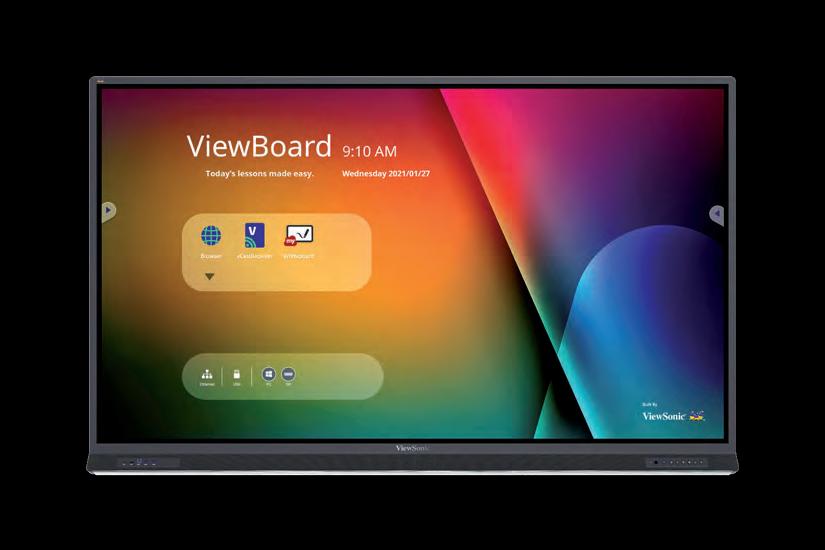
Godfreys Commercial’s distribution network is extensive, covering all areas of Australia and New Zealand and just recently, officially opening the doors to a new showroom in Melbourne. The state-of-theart facility has been specifically designed with all floor care needs in mind. In addition, the purpose-built training facility will assist customers and their teams with any new or existing machines from our range.
The centre provides ongoing excellence
in customer service and boasts over 5,000 sqm of stock and maintenance areas — so customers will always receive the best service and care for their machines. Godfreys Commercial prides itself on superior customer service, aftersales care, product training and ongoing education.
Godfrey Commercial has extensive experience in the education sector, including schools, colleges and universities, and applies these insights to offer solutions that provide the highest quality standards to ensure all environments will be hygienically and environmentally clean.
Godfreys Commercial’s mission was
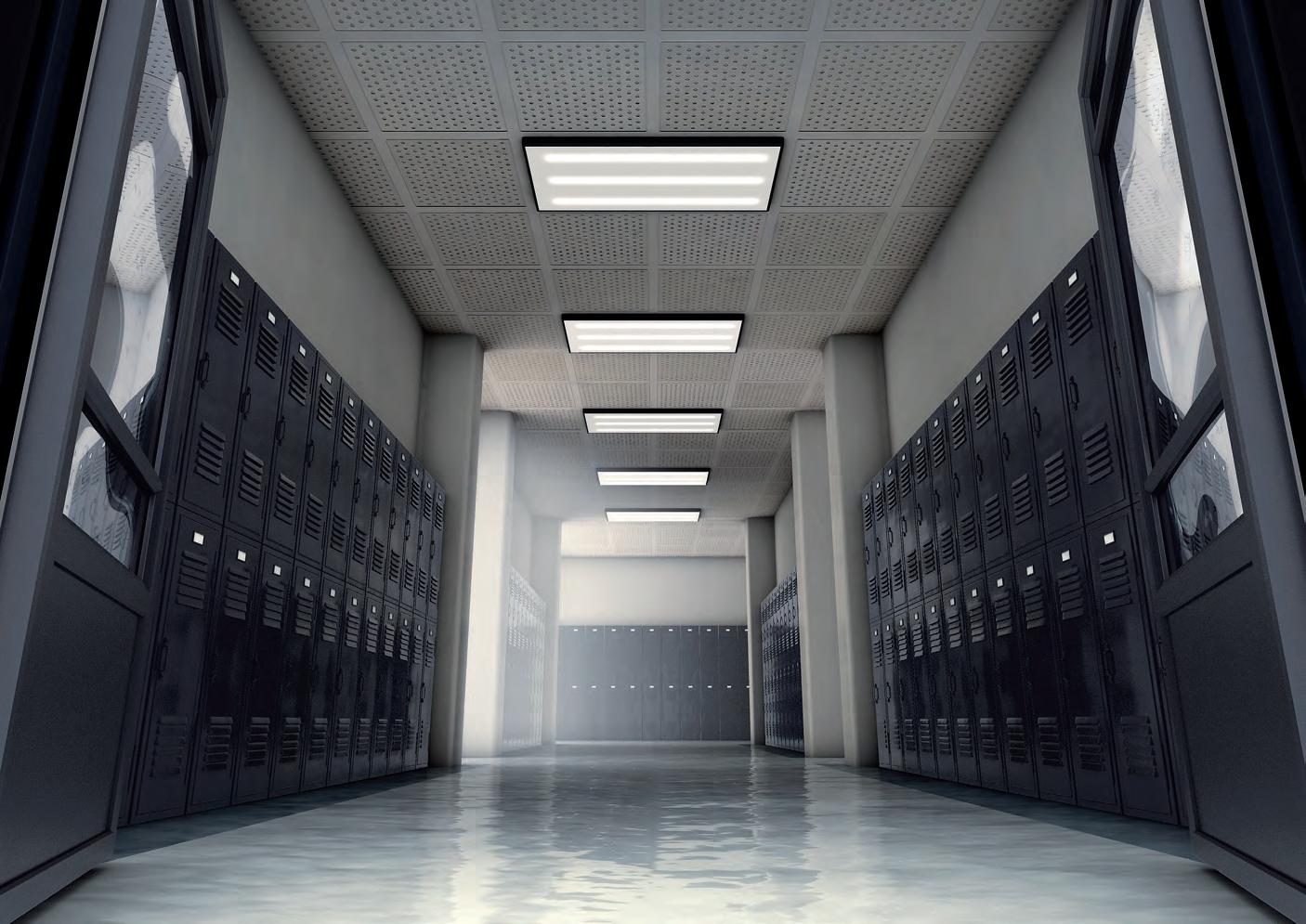
been specifically designed with all floor care
teams
existing
with the goal of building a company with intelligent team members and innovative products at its foundation. As industry leaders with a relentless drive to supply cutting-edge floor cleaning equipment and training, they also build long-term customer relationships, providing more than just a floor cleaning solution.
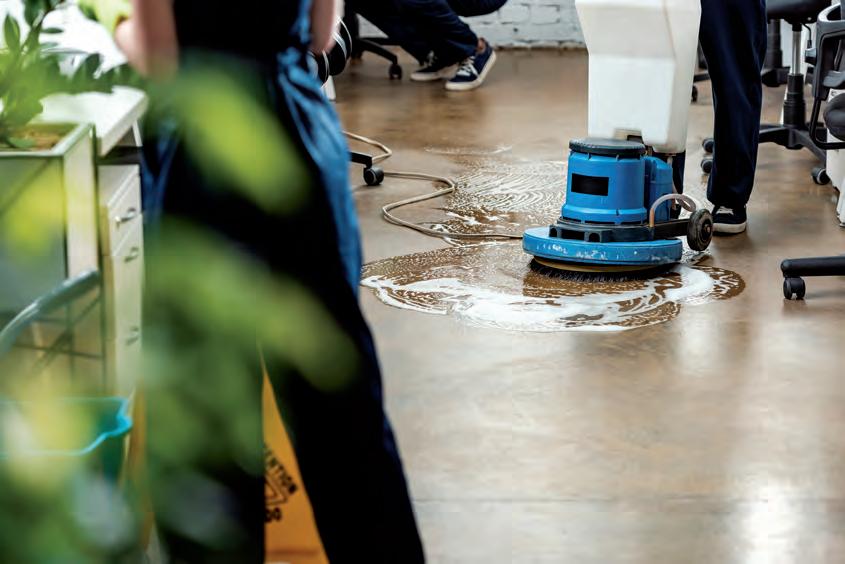


No matter the destination or year level, an educational tour is remembered for a lifetime, inspiring students to take on a greater sense of personal responsibility and consider the difference they can make as global citizens. School trips encourage students to fulfil their potential and grow beyond their comfort zones.
Founded in 1967 by a school teacher, WorldStrides is a trusted global organisation that has created educational travel experiences for over 50 years. It has offices around the world, including Australia, and has so far taken more than nine million students on educational tours.
The Australian team understands the intricacies of the state-based education
systems and the priorities of schools and educators. As a result, tours are strategically designed to complement the Australian curriculum and maximise student learning outcomes.
WorldStrides discusses 7 popular destinations for educational travel that are well worth considering when planning an educational tour in Australia or overseas:
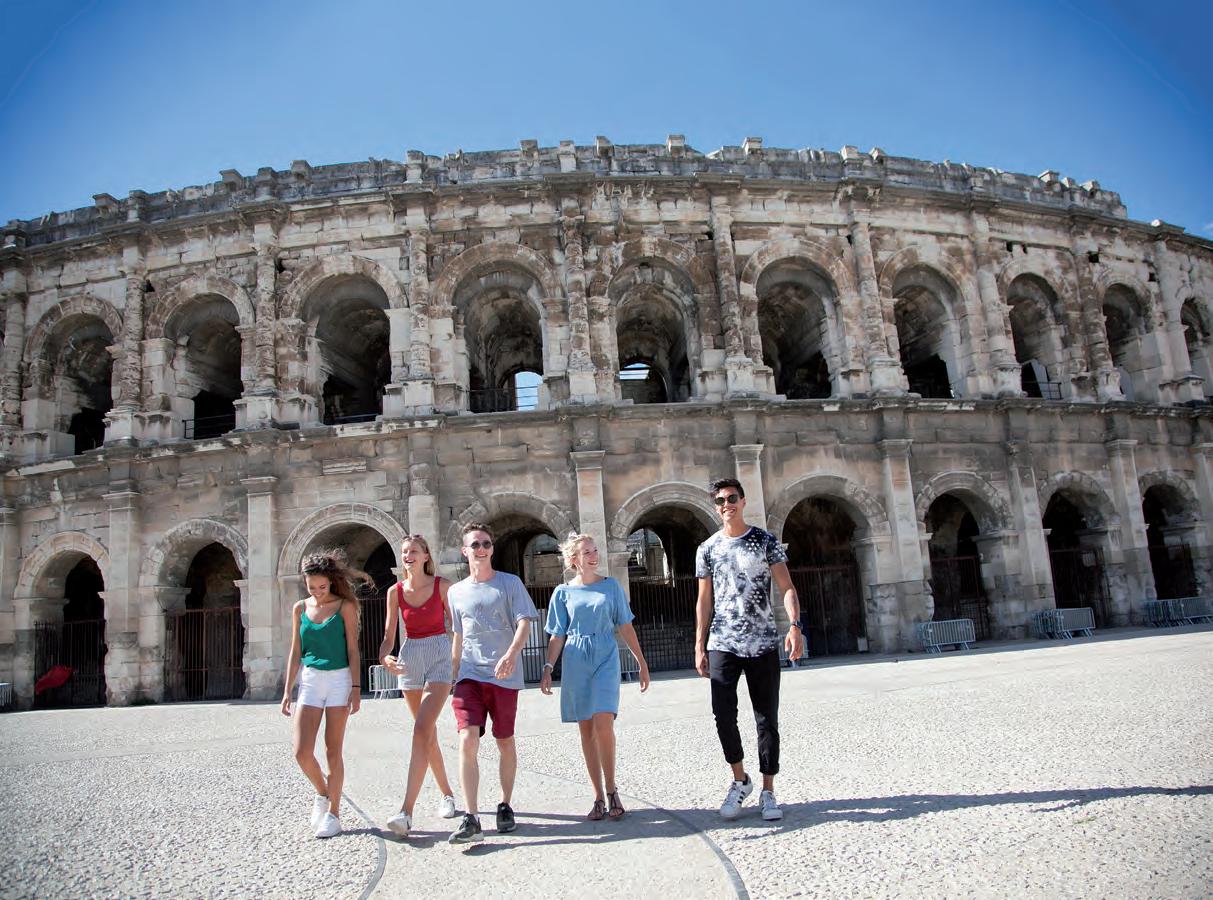
Learning areas: Language, History, Arts, Food Technology
Explore unforgettable ancient sites, sample culinary delights, discover magnificent masterpieces and of course, hone your language skills on a tour in Italy. Italy
programs are packed with immersive gallery visits, guided tours of historical hotspots and authentic interactive learning experiences, including a regional farm stay.
USA Learning areas: Maths, STEM, History, Geography, Performing Arts
Discover diverse educational tours across the USA, where students can participate in performing arts workshops in New York City, walk the halls of power in Washington D.C. or experience life as an astronaut in Alabama, uncovering the logistics of space suit theory and design, space physiology, scuba spacewalk training, aeronautic design, aircraft simulations and orbital mechanics.
Learning areas: History, Geography, Language

Introduce students to the fascinating paradox that is modern Japan, where ancient rituals and reverence meet cutting-edge everything. Make your way through the neon lights of Tokyo, experience an overnight stay in a ‘Ryokan’ (a traditional Japanese Inn), explore ancient temples and shrines, and even try your hand at sushi-making.

Learning areas: Health & Physical Education, STEM, History, Outdoor Education
Nestled beneath spectacular mountains, Lake Tekapo in the South Island of New Zealand is the ideal base for students to learn to ski or improve their technique at Roundhill Ski Area and Mt Dobson. By night, the area is an internationally renowned location for stargazing – part of the UNESCO Dark Sky Reserve, students can explore the Mt St John Observatory on a guided tour. Other activities include a visit to Tekapo Hot Springs, a hike through Hooker Valley and learning about mountain and alpine climbing at Sir Edmund Hillary Alpine Centre.
Learning areas: STEM, History, Civics & Citizenship
Learn about the planets of our solar system and the magic of space travel at the Deep Space Communication Complex. Discover first-hand how our electoral system operates during a 90-minute educational program at the Electoral Education Centre. Participate in a historic debate reenactment to understand the way voices are heard in a democracy, in the ‘Our Voices, Our Choices’ program at the Museum of Democracy at Old Parliament House.
CENTRAL AUSTRALIA
Learning areas: STEM, History, Sustainability, Geography, Aboriginal and Torres Strait Islander Histories and Cultures
Teeming with natural wonders, unique cultural experiences and places of significance, Central Australia is the perfect destination for an educational tour in Australia. No trip to Central Australia is complete without experiencing the rush of a flight simulator and exploring the central control room at the Royal Flying Doctors base in
Alice Springs. While in Alice Springs, students tour the MacDonnell Ranges and feast their eyes on Simpson’s Gap, Stanley Chasm, John Flynn’s Grave, Ormiston Gorge and Anzac Hill lookout. Other educational activities include the Lilla Indigenous Cultural Experience in Watarrka National Park, where students can discover the local Anangu culture, explore the base of Uluru and tour the town famous for its opals and underground community, Coober Pedy.
MOUNT HOTHAM
Learning areas: Health and Physical Education, Aboriginal and Torres Strait Islander Histories and Cultures
Home to some of Australia’s deepest snow, Mount Hotham’s altitude makes for stunning scenery and an authentic alpine experience. The mountain features easy slopes for first timers and more advanced terrain for seasoned snow-goers. Super-wide runs provide beginners with space to learn and steep gullies invite the adventurous intermediates.
There are plenty of fun activities off the slopes including snow-shoeing the ancient Brabralung trail and learning about the indigenous peoples of the Alps. EM
For further information visit, worldstrides.com.au
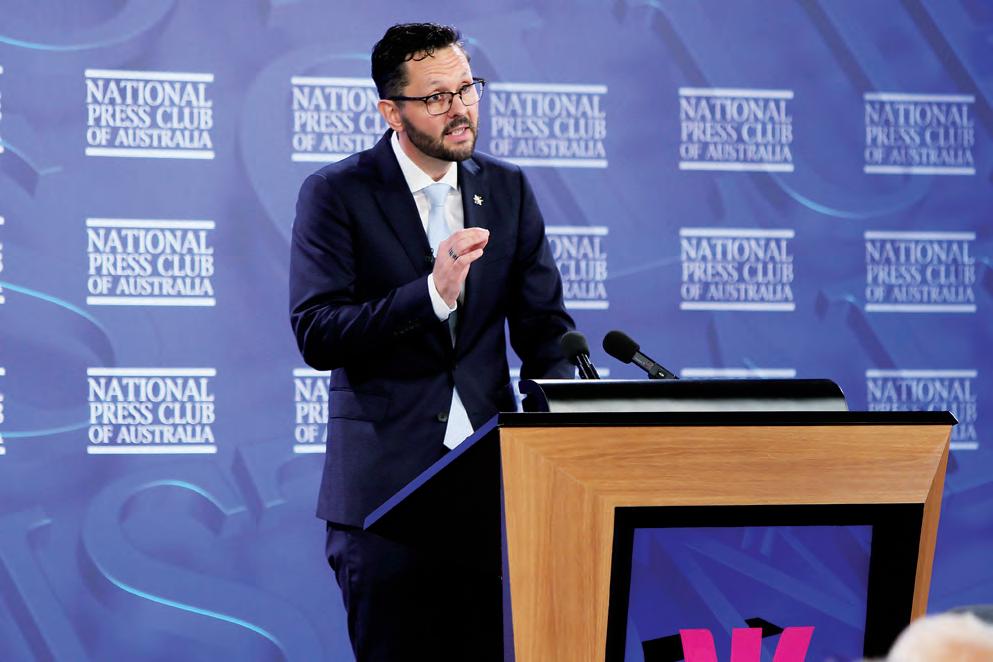



The Government’s Jobs and Skills Summit has focused minds on what Australia needs to do to build the highly skilled workforce we need to secure our economic future.
A recent report from Universities Australia predicted demand for high school teachers will outstrip supply by 4000 in coming years.
By any measure, that’s a dramatic shortfall. And where that shortage is going to have the biggest bite are the crucial fields of science,
technology, engineering and mathematics (STEM).

Already, we have a significant proportion of teachers teaching science and maths and technology across the country without strong prior subject knowledge.
On the latest data, around one in four Year eight students (23 per cent) is taught by nonspecialist maths teachers and one in ten (9 per cent) by non-specialist science teachers.
Yet the evidence is in: when taught by outof-field teachers, no matter how hard a teacher works, students’ enthusiasm and desire to continue in maths and science often falls.
To fix this, we need to attract more quality candidates, lift completion rates for teaching degrees, and boost the supply of specialist teachers in science and maths and technology.
Teaching is a stimulating and inspiring career choice. Teachers do one of the most important jobs in our communities. They nurture the next generations of young minds, give students a strong foundation of knowledge, and instil a lifelong love of learning.
And still the teaching profession is not yet as rewarded, recognised and respected as it needs to be. We need to tackle this to give Australian children the very best start in life.
Higher teacher salaries would telegraph the immense value society places on teaching and boost the academic achievement levels of the candidates applying for teaching courses.
One disincentive for academic high achievers to go into teaching is the perception that they might feel bored teaching the same thing year after year. To solve this problem, teaching needs to be reframed as the intellectually challenging and incredibly rewarding career that it is. This requires clear pathways for advancement into roles as specialist teachers – where teachers are supported and rewarded to improve teaching practice in their fields.

And we really need those specialist teachers in STEM. Research by the Australian Mathematical Sciences Institute highlights that, at the current rate of training, it would take 20 years to ensure every Australian student is taught by a maths teacher with specialist training.
In the short-term, a quick fix would be to give current specialist STEM teachers an opportunity to work across multiple schools.
An extra benefit of this solution is that specialist teachers would be exposed to different teaching methods across multiple schools. This would also help to accelerate career paths for those teachers, create more full-time or larger time fraction positions, and further elevate the status of teaching.
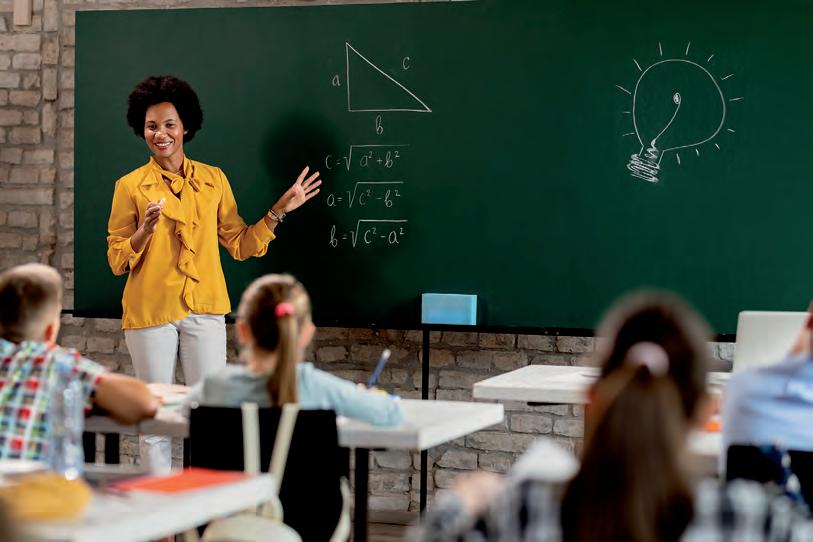
In the medium-term, there is an opportunity to retrain and deploy some of the thousands of talented science and technology staff who lost jobs in the university sector during the pandemic – and others keen to move out of short-term research employment contracts.
Doing so will help to tackle the shortages of specialist STEM teachers in schools, including in regional Australia where this shortage is most pronounced.
To identify and prepare this untapped STEM teaching talent, a ready solution is at hand. A national STEM organisation with access
to this specialist workforce, in partnership with an accredited teaching training provider, could be tasked to provide an end-to-end STEM-specialist program similar to Teach for Australia. Collectively this would prepare STEM professionals with the necessary experience and skills for an intensive teaching program.
Such a program could also be expanded in the future to provide opportunities for STEM educators to engage with STEM professionals as part of their career progression.
In the long-term, we need to do more to encourage students to study maths and science at school in Australia. Our economic future depends on it. The drop in the desire to study these subjects is not only an immediate problem - but one that will damage our long-term workforce capabilities, national income and living standards.
All of the big new emerging technologies poised to revolutionise our lives and economy - artificial intelligence, machine learning and quantum computing - will need a highly-trained workforce with strong maths skills to build and maintain strong sovereign capabilities.
To fix this problem, careers education and advice needs to provide broader information to students about the strong benefits of studying STEM subjects, and the immense and hugely rewarding career opportunities that can provide for them.


Australia’s future economy - and our future workforce - will depend on our students having that essential bedrock knowledge of science and maths.
Without it, we’ll be lost. EM
student growth
every student’s journey,
students a voice



A recent Grattan Institute survey of 5,442 Australian teachers and school leaders across all states and territories in both primary and secondary schools found that more than 90 per cent of teachers say they don’t have enough time to prepare effectively for classroom teaching – the core focus of their job.
from an academic perspective, so teachers don’t need any technical knowledge to create safe, dynamic, and highly customisable online classes. NEO removes the time-consuming hassle of switching from one edtech application to another, moving data from one system to another, and trying to make various
NEO is a powerful K-12 learning management system (LMS) for designing lessons, building engaging content and managing all learning activities and assessments. It has been designed as a complete solution for use by teachers, students and school admins to stay connected and collaborate with each other.
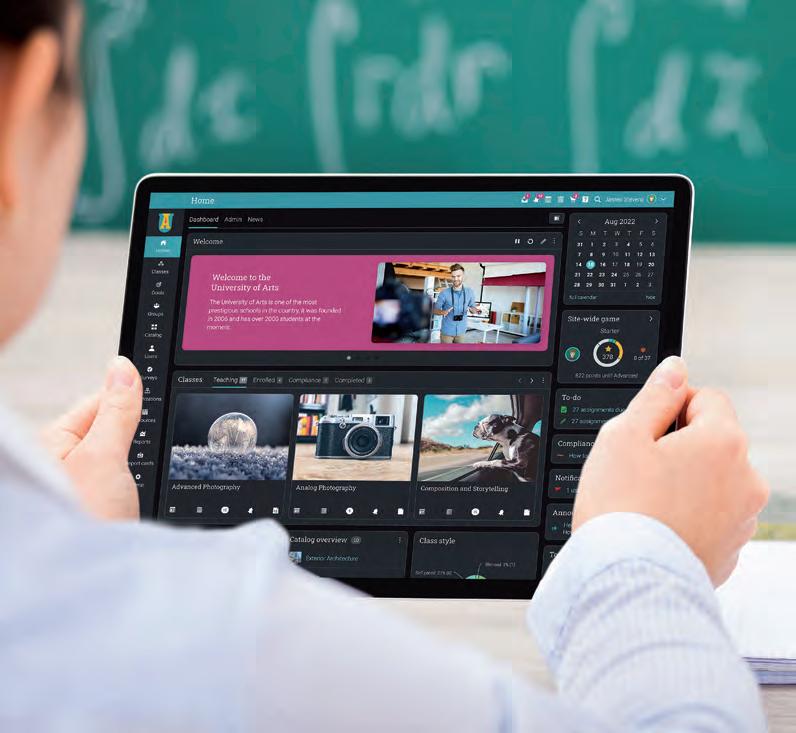
NEO is currently used in 129 schools worldwide in over 36 countries. A survey of schools using NEO found that 92% of schools agreed that it had transformed their institution, making it easy for teachers to create online classes, and for students to stay engaged and have an enjoyable learning experience anytime, anywhere.
“NEO allows us to really structure our lessons so that our students are familiar with what we start off with, what comes next, what’s expected of them, and when they’re done. Through this structure, we’re able to teach these students information that they typically wouldn’t be able to access outside of high school or even in high school,” says Cathi Allen, Executive Director, Higher Education Certificate Program, Denver.
“In the face-to-face classes, we would have spent two or three hours grading each exam by hand. However, now that we use the platform, I’ve found that this grading takes just one or two minutes because the platform provides us with the answers,” says Dr. Emily Mabborang, Principal, The University of Saint
NEO is a user-friendly platform for young learners.
Louis, Tuguegarao.
“Online learning platforms, such as LMSs, have become a crucial component for successful teaching and learning in the pandemic, with remote learning appearing to be here to stay.
Of course, face-to-face teaching is also an important aspect of the educational process. However, this time span has also shown how learning in a virtual environment can offer unique benefits and be a more open, engaging, and inclusive choice for students who benefit from non-traditional learning methods,” Mabborang continues.
• NEO integrates with all the tools you’re already using - including a SIS integration to safely import all your data into the system. Learning can also be enhanced by integrating NEO with Google Tools for Education and Microsoft Tools for Education.
• It’s a user-friendly platform for young learners – NEO has an intuitive design that is highly customisable, making it easy to be used even by a year one student.
• It makes learning inclusive for all students – online learning has no limitations for students’ learning abilities thanks to NEO’s innovative accessibility features.
• NEO allows teachers to choose their class
style – select the type of class that best suits your teaching style, whether it’s instructorled, blended, self-paced, or micro learning.
It’s easy to create and deliver diverse educational content, tapping into different useful features.
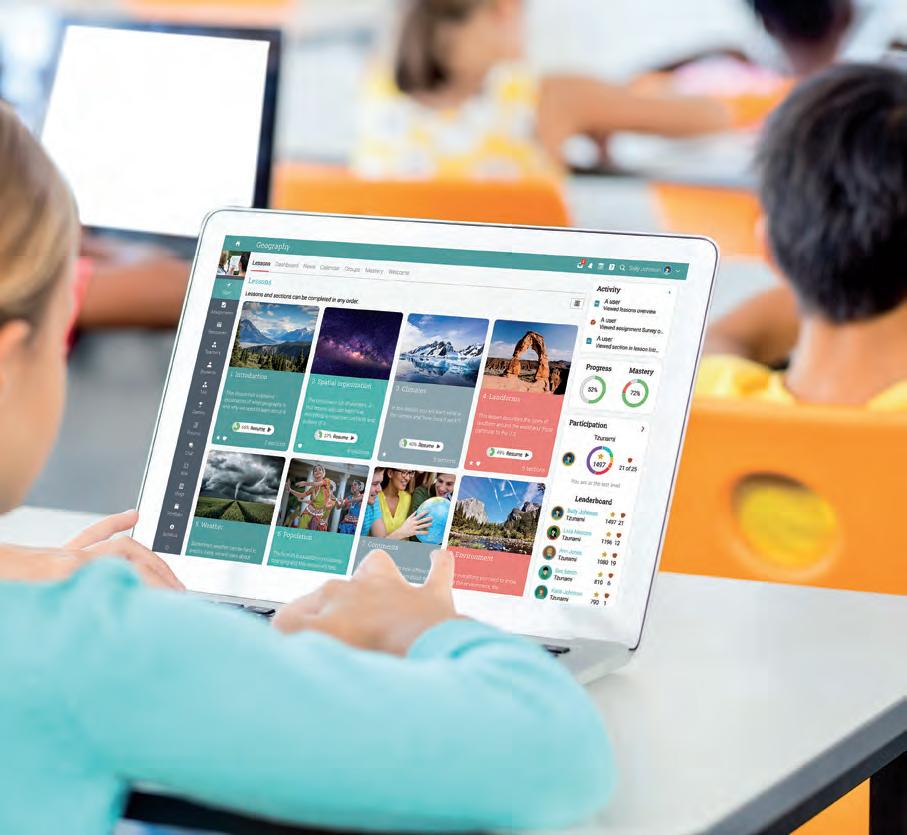
• It makes assessment a breeze - teachers get instant analytics on student progress, allowing them to pinpoint where students might need additional help.
• NEO creates an enjoyable learning experience – students love using NEO thanks to features such as gamification or adaptive learning, which makes learning more fun. Plus, they can access the system anytime, on any device.
• It helps increase student mastery through personalisation – teachers can track a student’s progress on a competency basis and personalise the teaching content. Thanks to automation, the system can even make recommendations based on both student progress and learning goals. EM

For further information visit, cypherlearning.com/en-au/neo
NEO can integrate with the tools a school is already using.
JB HI-FI EDUCATION HAS BEEN SERVING THE EDUCATION SECTOR FOR OVER 20 YEARS AND IS ONE OF THE LARGEST PROVIDERS OF TECHNOLOGY TO THE PRIMARY, SECONDARY AND TERTIARY MARKETS IN AUSTRALIA - INCLUDING BYOD AND 1:1 PROGRAMS.


In an exciting development for the commercial division of JB Hi-Fi Group Ltd, JB Hi-Fi Education Solutions recently re-branded to JB Hi-Fi Education. “JB Hi-Fi Education is our recognition of the unique needs of the education sector. It reflects our expertise in supporting education institutions as a specialty area,” says Sandy Hyland, Head of JB Hi-Fi Education. “This includes our refreshed online BYOD program that makes it easier for schools and parents when it comes to managing and purchasing school technology. It’s an important consideration when promoting consistency of learning, whether at home or in the classroom,” adds Hyland.
SIMPLIFYING TECHNOLOGY FOR SCHOOLS AND PARENTS Technology is complex. When choosing devices for the rigours and demands of student life, there is a wide range of concerns from education needs to technical specifications to support arrangements that need to be weighed up. JB Hi-Fi Education’s BYOD program aims to simplify this for
schools and parents alike. Its education experts work with schools to identify the right education-specific products for students’ learning outcomes, as well as the school’s ICT infrastructure and processes. Schools are able to offer these devices and accessories to parents at special commercial prices, with extended warranty and insurance options.
“With the JB Hi-Fi Education online BYOD program, parents can confidently make their purchase knowing that they’re choosing from a range of devices and accessories pre-selected and approved by their school. It’s a very different experience to retail,” says Hyland.
Clear school communications play a key role in successful BYOD or 1:1 programs.
Communications should emphasise the benefits for students including improved learning outcomes, honing 21st century skills, and increased collaboration and engagement with teachers and peers. For parents, important information includes required or recommended
device specifications, accessories to support and complement their child’s learning, school IT support processes and purchasing options.
A thoughtful communication and engagement plan could include letters or flyers, web pages, email communications, parent information sessions and social media.
“A strength of JB Hi-Fi Education’s BYOD program is the support we can provide schools with their family communications. Our Account Managers are very happy to assist by attending parent information sessions, online or in person. We’ve also produced some fantastic new resources for schools to leverage in their own communications - such as parent overviews, tool kits, videos and presentations,” continues Hyland.
Traditionally, schools had to manage complex logistics in order to have the right devices in
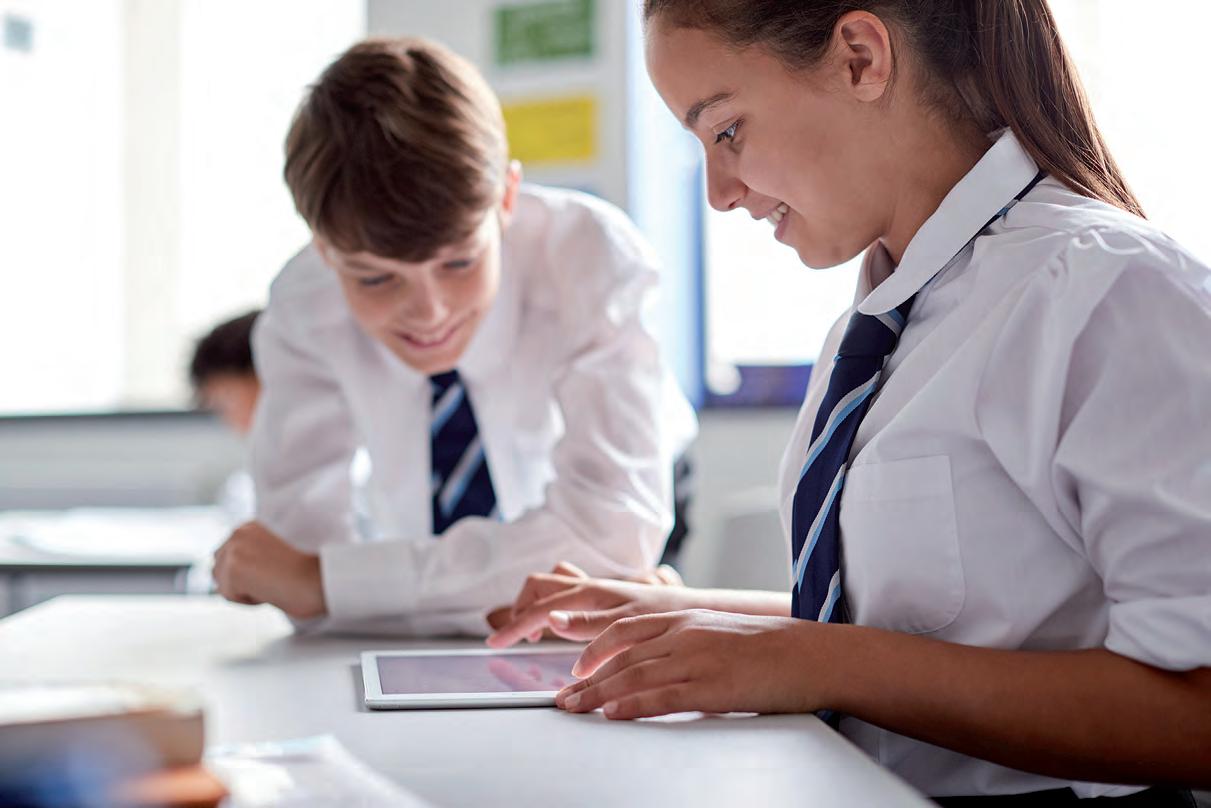
JB Hi-Fi Education’s BYOD program aims to simplify technical specifications for schools and parents.
students’ hands for the start of the school year. Ordering, delivery, installation, distribution and post-deployment support all required planning and staffing – often a tall order for stretched IT support resources.
Modern device management tooling and processes eliminate the need for schools to even touch a device before a student powers it up for the first time. Leveraging the reach of JB Hi-Fi’s extensive retail network, parents can order a device online, pick it up from their local store, and it will automatically self-configure when connected to the internet. This process ensures it matches the school’s security and software requirements and supports on-the-fly changes if an issue arises or an upgrade is urgently required.
“New software capabilities such as Microsoft’s Autopilot, and Apple’s Device Enrolment Program have enabled JB Hi-Fi to create a truly unique offering through their
distribution network. Schools partnering with JB Hi-Fi Education enjoy the benefits of our deep expertise in modern device management, and the convenience of participating JB Hi-Fi stores across the nation,” says Hyland.
There’s an invigorating energy and vision at the new JB Hi-Fi Education for the future of education technology. JB Hi-Fi Education’s commitment to developing a breadth of offerings and expertise to support schools aims to provide a powerful platform for the next generation of Australian educators and students.
“We’re more ready than ever to support our education customers with investment in nationwide reach and fulfilment backed by hundreds of retail stores, an experienced team of education specialists, and strong partnerships with leading global brands,” adds Hyland. EM
For further information visit, www.jbhifi.education
Tim Waley is Executive Consultant at Tes Australia, part of Tes Global - the international provider of education software and recruitment solutions. Tim has more than 30 years of experience as a principal in Australia, the Middle East and Asia. He has served as president of Independent Schools Tasmania, as an ISCA board member, an AHISA member and in a variety of capacities on state education bodies in Tasmania.
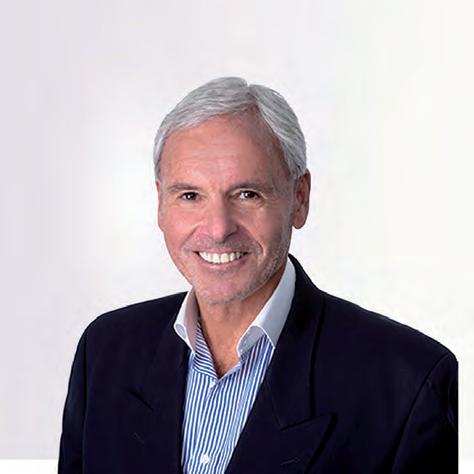

The past few years have been among the most challenging in living memory for schools. The worst of the pandemic may now be behind us (hopefully, at least), but we are facing a teacher shortage crisis, leaving schools scrambling for staff and students paying the price.
The issues that got us to this point are numerous and nuanced and cannot be resolved with quick fixes. Like a ship with numerous leaks, school shortages cannot be resolved with
makeshift plugs. But a considered and forwardlooking approach to staff management may support schools to develop and retain brilliant staff.
At Tes, we’ve been empowering educators for more than a century and we are committed to enabling schools to flourish. And so, in order to better understand what would support educators
to stay in the profession, we conducted a survey of Australian school staff, from graduates to Principals.
The results were clear: although Australian staff continue to be confident, motivated and retain strong relationships with their students, they face many struggles, from spiralling workloads to feeling that their voices are not heard and that they are not sufficiently valued by leaders.
The good news is that the results of the survey offer clear guidance about where improvements can be made to boost wellbeing and, with it, retention. Communication between leadership and staff, for example, can be improved fairly simply. Above all, our survey results show how crucial it is for senior leaders to make wellbeing a key focus in their schools, for the benefit of all, including themselves.
Accessing the right professional development was highlighted as an area of improvement for many of our respondents. The more pressing priorities of the pandemic and teacher shortage have, understandably, put professional development lower on leaders’ lists of concerns than usual, and staff are feeling the effects when it comes to career development.
Some 39% of respondents said they don’t feel they have opportunities to develop in their current role, compared with 38% who do. Likewise, staff highlighted a desire for more constructive feedback to help them to develop
as professionals: 44% of respondents said they feel they don’t have oportunities to know how well they’re doing at work, compared with 36% who do.
Nonetheless, almost half of respondents said that they are working towards goals that matter to them. By ensuring that staff are given access to the training they need and the space to discuss, develop and work towards meaningful goals, with regular feedback, leaders are likely to see an improvement in teacher wellbeing, confidence and student outcomes.

Making sure that staff feel heard and understood is a top priority for effective leaders; doing so has been proven to improve confidence, self-esteem and self-awareness among employees. But respondents say this still isn’t happening quite enough in Australian schools at the moment.
Our results show that less than a third of staff (28%) feel they are given a voice in how decisions are made in their school, with more than 44% saying that they are not. There are easy-toimplement approaches that can improve this, such as anonymous online surveys, which offer a safe space for staff to share their views honestly and openly (perhaps letting off steam when needed!) and enable leaders to get a clear picture of the working environment and any issues that need addressing.
There can be no doubt that this has been a tough time for Australian schools, with leaders, teachers and students facing unprecedented
challenges. What our survey highlights, however, is the resilience of the profession, with staff remaining confident in their abilities and maintaining strong relationships with colleagues and students alike.
That said, there are clearly areas where schools need to improve, and quickly. Work-life balance, flexibility and workload were all cited as key concerns, and leaders would be wise to explore the many options available to improve these, from flexible timetabling to more part-time opportunities.
These challenges are not insurmountable. By offering staff the right support, training and knowledge that their voices are heard and understood, leaders can inspire an upward shift in wellbeing at their schools, and make sure their communities are thriving.
And that’s why we’ve created our new Staff Management subscription; an all-in-one software suite, specifically built for Australia and New Zealand, that brings together our tried-andtrusted tools for job advertising, professional development and wellbeing, in one place, for one annual price. It enables schools to take a proactive approach to retention and create a thriving environment of happy, high-performing staff, who want to stay for the long term.
EM
For further information visit, learn more visit tes.com/staff-management
Showcase your school with ease at events with Electro-Voice portable PA system.


EDUCATORS AND LEADERS UNDERSTAND THAT EVENTS ARE KEY TO THE SUCCESS OF A SCHOOL. ELECTRO-VOICE HAVE DESIGNED AN EASY TO USE, HIGH QUALITY, PORTABLE PA SYSTEM DESIGNED WITH SCHOOLS IN MIND.
Internal events such as concerts and performances, as well as public events, such as open days, are key opportunities to showcase a school’s merits to both existing and prospective students and their parents. Teachers are required to have a broad skill set; at times this may include technical wizardry. The Australia and New Zealand Autonomy of Work Index 2021 report by Asana reported that the pandemic and the subsequent shift to remote working and learning triggered an acceleration of digital transformations, which fast-tracked Australia’s digital business initiatives by six years. Electro-Voice’s EVOLVE range is here to make your event set up easy, and its delivery professional and impressive.
EVOLVE 30M’s lightweight design and rolling case, allows staff to wheel the system around without compromising safety.
With the convenience of a column-based speaker with the audio quality of a larger box, alongside the innovative addition of Bluetooth control, the EVOLVE range allows you and your staff to have easy access to professional while maintaining easy portability and set up. This is thanks to the EVOLVE 30M’s lightweight design and rolling case, allowing staff
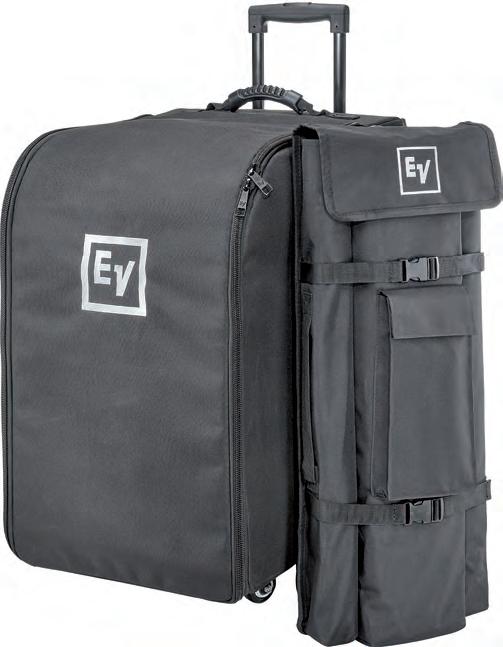
“With the convenience of a column-based speaker with the audio quality of a larger box, alongside the innovative addition of Bluetooth control, the EVOLVE range allows you and your staff to have easy access to professional while maintaining easy portability and set up.”
to wheel the system around the school without compromising their safety. Whether it is a school assembly, sports carnival or a music performance, this light-weight solution can be transported and set up within minutes to provide the best-in-class sound quality.
Superior Electro-Voice sound quality coupled with the most complete feature set in its class – the perfect combination of performance and flexible functionality, in a very compact package It includes an eight-channel digital mixer, studio-quality onboard effects, and remote control of all audio, effects and mix functions via the next-generation Electro-Voice QuickSmart Mobile application
The EVOLVE 50 Portable Column System is a three-component loudspeaker system powered by a 1000 W Class-D amplifier and driven by ElectroVoice’s QuickSmartDSP. The system consists of a 15 mm wooden, ported, powered subwoofer enclosure that houses a 12” subwoofer capable of a functional frequency output down to 37 Hz. It has a clean and compact design and is easy to transport and setup ready to deliver a professional PA performance
The EVOLVE 50M features Electro-Voice’s new QuickSmart Link digital audio and control technology, an onboard mixer, DSP and effects.
The EVOLVE 50M is the perfect choice for school assemblies, DJs and any application where true professional audio performance is required in a super-compact and portable package.


The EVOLVE Loudspeaker products all ship with a carry bag for the speaker pole and are a vailable with a rolling case to wheel around the school without compromising your team’s health or safety. EM
For further information visit, www.jands.com.au/brands/electro-voice

Bloum is a student growth platform that aims to stop students falling through the cracks providing the optimum holistic approach to information management with a unique focus on student wellbeing. The system can be set up for different levels of privacy and accessibility to suit the school’s requirements.
The Bloum platform automatically interprets learning and wellbeing data to create a full picture of every student’s journey. Bloum is unique, in that it gives a holistic view of student growth by combining academic and attendance data, and assessment and wellbeing frameworks.

The platform takes in information from
various sources, including NAPLAN, ACER PAT and Allwell tests, internal school assessments, attendance, and wellbeing data. By seamlessly combining all this information stakeholders can see a clear picture of each student’s overall learning over time.
“Bloum has really changed the way we use data, allowing us to have richer discussions with our students in regard to their performance,” says Victor Dalla-Vecchia, ICT Manager and Teacher, Loyala College.
A recent study by the Australian Institute for
Teaching and School Leadership (AITSL) highlighted that wellbeing is crucial to academic achievement, and wellbeing programs can support and accelerate students’ learning.
A unique feature of Bloum is that students can undertake their own wellbeing check in. By rating their current feelings as positive, negative or neutral across wellbeing areas such as, body image, relationships, identity and culture and their feelings of being valued, loved and safe. The wellbeing domains used are based on ARACY’s (Australian Research Alliance for Children and Youth) Nest Framework. The Nest Framework
Monitor wellbeing patterns and trends across time.
was facilitated by ARACY in collaboration with BHP (Bupa Health Foundation) after evidence showed that Australian children and youth were lagging behind across key international health and wellbeing indicators. The Bloum platform identifies students requiring intervention as well as allowing students to easily request help from a staff member of their choice.
“Bloum has given visibility into the capabilities of our students allowing us to better direct them in their learning journey,” says Brendan Hallinan, Deputy Principal, Catholic Regional College, North Keilor.
School leaders and managers can few the data from any level – including whole of school, by year group, class or individual, as well as over varying time periods.
“Bloum has allowed us to acknowledge and monitor learning concerns and trends. Learning profiles of our students are easily accessible and provide teaching staff another resource to further improve student growth and achievement by tapping into Bloum’s ability to track progress over time,” says Suzanne Pola, Deputy Principal, Loyola College.
• 2021 Homegrown ISV Award winner for the Tech Innovation category at the ARN Innovation Awards.
• Understand every student’s journey, find suggested interventions for their specific
needs, and track the impact of teacher support.
• Access correlated results from your LMS, NAPLAN, ACER PAT, Allwell and student wellbeing to make more informed decisions.
• Engage students and parents by showing them the correlation between achievement, attendance and wellbeing using the Student Overview functionality.

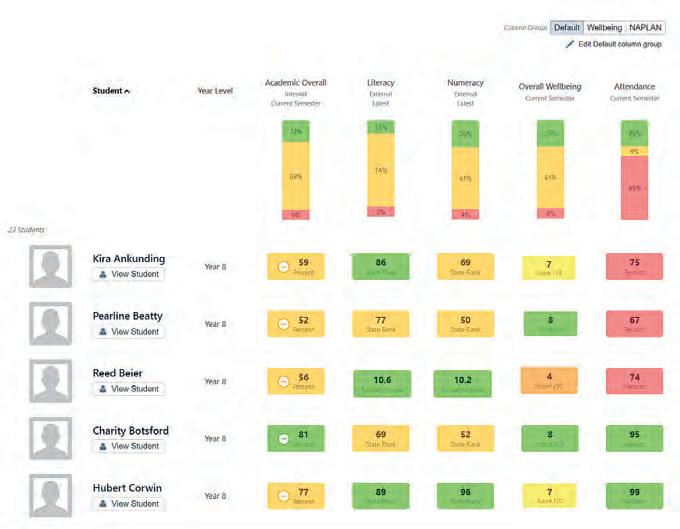
• View Wellbeing insights and Teaching and Learning insights in one place
• Bloum is a robust platform that ingests data from multiple sources. Whether through an API or a CSV upload, Bloum will be able to seamlessly consolidate all your school data. Bloum enables educators to make more informed decisions that unlock every student’s full potential. EM
For further information visit, bloum.ai
View
“Bloum has really changed the way we use data, allowing us to have richer discussions with our students in regard to their performance.”
WE ALL KNOW THE IMPORTANT ROLE A GREAT TEACHER CAN PLAY IN SETTING A STUDENT UP FOR SUCCESS AND EQUIPPING THEM WITH THE SKILLS AND CONFIDENCE TO TACKLE WHAT’S NEXT.
But what we often don’t stop to think about is the contribution a great network of technology solutions and partners can play in making an impact on a student’s journey. If the COVID-19 pandemic has taught us anything, technology

is key for today’s high school graduates, as they step outside the classroom and navigate the increasingly complex ‘real world’.
With smart technology at their disposal, students can connect, collaborate and engage with their passions, and be empowered to reach for the stars. Recently changing its name to reflect its global outlook, Norwood International High School’s renewed commitment to technology is helping its students thrive and learn without limitation.
A world class school accredited by the Council
of International Schools, Norwood International High in Adelaide, South Australia caters for 1,700 students from a variety of cultural backgrounds. Norwood celebrates its diversity in its student body, and also in its diversity of programs - graduates leave global citizens, armed with career and life skills from a range of academic disciplines and extracurricular activities.
One pursuit on offer is the arts - Years nine to 12 can explore their passion in the fields of graphic design, art, architecture, 3D modelling and film production in elective classes at the school’s newly revamped Innovation Hub.
“Technology is what we do - technology
plays a part in pretty much everything that our students do. The way that we coach and train our students to use technology appropriately means that they can then function in a really complex world,” says Amanda Walsh, Deputy Principal, Norwood International High School
A purpose built area, the school’s Innovation Hub recently needed a facelift - it was important to Norwood that the tech on offer mirrored exactly what students would experience in a career in the arts, music or media industries in 2022. Turning to Lenovo for its extensive portfolio of hardware, software, and services, Norwood replaced an ageing suite of products with brand new Lenovo workstations for students to experience first hand while working on their school projects. According to teachers, when they first saw the new space, students’ jaws dropped!
so new hardware with the same operating system was the logical option. But Norwood’s Innovation Hub desktops had a higher performance need than that of standard desktops - that’s where Lenovo’s customisable CPU solutions came in.
The new workstations Lenovo and Norwood’s ICT team installed were best optimised for the faculty’s use case and specialist tasks; fitted with NVIDIA graphic cards, the workstations run high performance applications without skipping a beat. Students designing graphics, 3D modelling, editing videos and game coding have the ability to render creations much faster and smoother.
“Lenovo for us was a no-brainer, because the work and the support that we get from the company is impressive, and most importantly, we wanted to have devices that were recommended and reliable,” says Walsh.
Fast forward a few terms, and the complexity and quality of the work students are submitting has increased significantly. Students’ creativity and outcomes have improved, with higher
“Technology is what we do - technology plays a part in pretty much everything that our students do. The way that we coach and train our students to use technology appropriately means that they can then function in a really complex world.”

enrolments and interest than ever before in arts electives.
The best part? For those students looking to pursue a career in the arts, their exposure to industry-leading technology during their formative years has equipped them with invaluable experience and knowledge.
“We’re planning on installing two more computer lab pools, with similar specifications so that the teachers can have a similar experience [as the arts Innovation Hub] across different curriculum areas,” says Liam McMahon, ICT Team Lead, Norwood International High School
Enabled by smart technology, Norwood International High School’s vision - to help students understand that they can make a real difference in the world with their unique talentscomes to life every day. EM
For further information visit, techtoday.lenovo.com/au/en/solutions/education


Access the full platform via myViewBoard for lesson planning, lesson delivery, presenting, and participating. The system gives teachers the flexibility allowing for technological integration with other platforms so teachers can ease into the platform, still using their current windows platform if they wish. No matter your level of technical skills, you can pick it up and use it no matters what you’ve
been trained on due to its intuitive design. Join six million teachers, students and professionals who have already discovered myViewBoard Suite.
THE CLASSROOM AND WHITEBOARD myViewBoard Classroom brings teachers and learners together whether they are in the classroom or at home. This area can
engage learners, streamline teaching, and improve outcomes both inside and outside the classroom. Lesson planning doesn’t necessarily take place in the classroom and can be more time consuming than the lesson itself. myViewBoard Classroom is a virtual platform where teachers can prepare content, differentiate it by ability, and assign students into groups. Discussion areas can be created
myViewBoard makes accessing lesson planning, lesson delivery, presenting, and participating easy.
while teachers have full visibility of the class –including attention levels.
Real-time tools provide non-linear, ad-hoc engagement. The myViewBoard Whiteboard environment has a variety of educational tools built in explains Mitchell Hooper, Former Teacher and Interactive AV Trainer, Modern Teaching Aids. All tools are integrated which saves time going in and out of various apps. Tools such as camera sources, websites, media content such as YouTube clips, and pre-made resources, can all be imbedded with no adverts directly into the whiteboard – a major time saver. “It’s very easy to use it’s also cross platform which means you can prepare content on your window’s interactive panel and upload to the android device, all through scanning a QR code so you can take it everywhere with you,” says Hooper. The ability to integrate myViewBoard Whiteboard with your preferred cloud storage provides added flexibility to the platform. This is especially relevant for a secondary setting as teachers are constantly moving classrooms.
“There is also the ability to bring in a camera source - say you are in a food tech room, or an industrial arts room and you want to look at a plan or if you want to be able to look at student work - you can bring those resources straight into the white board. Sequence, it or brainstorm with it, whatever you would like,” continues Hooper.
As an interactive platform, it allows users to annotate over the top, write on the side use sticky notes, bring in easy to use interactive tools such as measurement and geometry tools, calculator, timers, a spotlight and magnifying glass, from one location. It also includes a built-in web browser where you can search up content, annotate or highlight it and import as part of the whiteboard page. The ability to screen record with audio and screen capture helps to accommodate for student absences as this recording can be uploaded to the schools current learning management platform.
“What I enjoy most about this platform is the simplicity of it - you can just start picking up the pen and using it, whether it’s image or audio content, PowerPoints, PDF’s, word documents, even files from other lesson creation platforms. You can import all that content in and use it as part of the whiteboard,” says Hooper.
Just like teachers, ICT managers need a way to save time. When looking after a fleet of technology, it is time consuming to go to individual panels to perform updates and to visit individual teachers to manage accounts. Using the myViewBoard management ecosystem, ICT managers can set up teacher user accounts and manage their privileges all though an accessible web portal. Using myViewBoard Manager, panels can be managed from a central location. This includes: installing updates and apps, customising panel settings, troubleshooting issues using the remote desktop, and broadcast digital signage to name a few capabilities. ICT managers can also assign administrators with specific privileges, such as
education matters secondary
digital signage and emergency messaging.
“The support from ViewSonic and their distribution network has made the Teaching and Learning experience more enjoyable for Teachers and Students with better outcomes,” says Peter Lyons, Interactive Technologies and Communications Engineer, TAFE NSW.
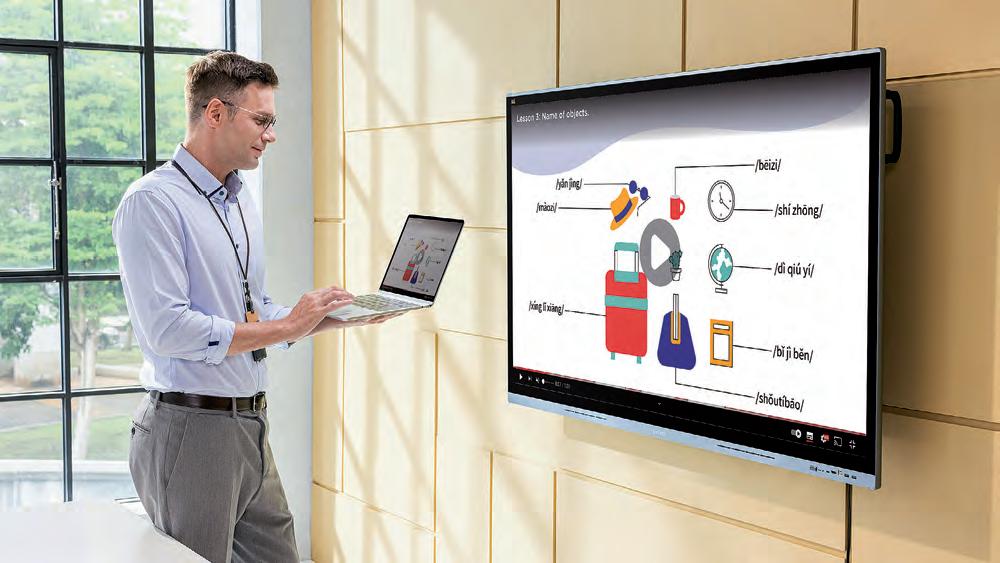

“With the five-year support, it really makes it simple to manage and provides piece of mind at time of purchase for the life of the equipment,” says Peter Lyons, Interactive Technologies and Communications Engineer, TAFE NSW. EM
For further information visit, www.viewsonic.com/au/education


From late 2020 through early 2021, as educators rushed to effectively deliver teaching and learning remotely through implementation of the right technologies, IBRS conducted interviews with 38 leaders in education (principals, teachers, technology leads, curriculum consultants, university executives) to track the changes taking place. It was clear from these interviews that as
challenges were emerging, but also new opportunities.
“It was important for us to evaluate the impact of remote and hybrid delivery of education in Australia and other markets and understand how the Zoom platform facilitated learning and engagement,” says Ricky Kapur, Head of Zoom in Asia Pacific. “The report highlighted the importance of rethinking hybrid education and
environment for educators and students.”
“There are various quality teaching models, but there are things in those quality teaching models that have never quite gotten across the line partly due to technology but mostly to do with the sheer weight and inertia of that existence inside education,” says Dr Joe Sweeney, Advisor – Future of Work at Intelligence Business Research Services (IBRS).
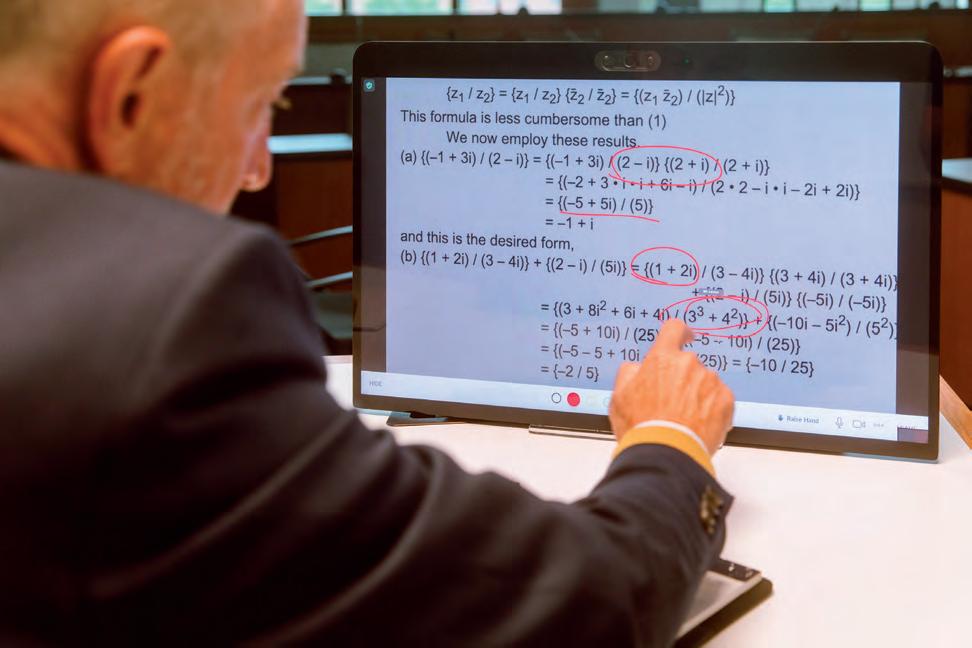
“That was the reasoning behind the research. We wanted to say ‘Okay remote learning has forced some of these quality teaching models to come to the fore. What were the lessons that we can take from this going forward? What should we keep?’” continues Sweeney.
The key ‘lessons’ gleaned from the research were:
• Lesson 1: Resilience star ts with digital thinking.
• Lesson 2: The time for innovation is now.
• Lesson 3: No school stands alone.
• Lesson 4: Mental health matters.
• Lesson 5: Prioritise professional development.
• Lesson 6: Purposeful screen time.
• Lesson 7: Curriculum goes bite-sized.
• Lesson 9: Pedagogy gets laser-focused.
• Lesson 10: Time shifting education is the new normal but demands new social norms.
• Lesson 11: Assessment is a trust equation.
• Lesson 12: Opportunities abound.
• Lesson 13: Build a technology ecosystem.
• Lesson 14: Equity of access still matters.
• Lesson 15: Embrace continuous change. Sweeney explained that there is now a window of opportunity over the next three to five years to embed these changes into education. Lockdowns have shown that institutions can adapt and change quickly when people are allowed to innovate. The report states, “Now that educators are aware that they can change quickly and that
educational institutions have the capacity to support trials and experiments in teaching and learning, we have the potential for a golden age of educational innovation.”
Sharing resources and parent involvement were two key areas Sweeney deemed crucial.
“It’s about sharing resources - that is a really big thing that we should try and keep. The sector has been working on this for years now but here’s what’s changed: every teacher now knows how to teach remotely,” says Sweeney. “If you are a specialist class teacher you can present into another classroom, you can have split classrooms with students from multiple schools all coming together. We now have this opportunity for a real natural learning environment.”
According to the report, schools that transitioned well into hybrid education amid the pandemic had a digital mindset. This does not mean applying technology to different components of the education experience separately but building an integrated digital ecosystem that consolidates systems for students and teachers for greater efficiency.
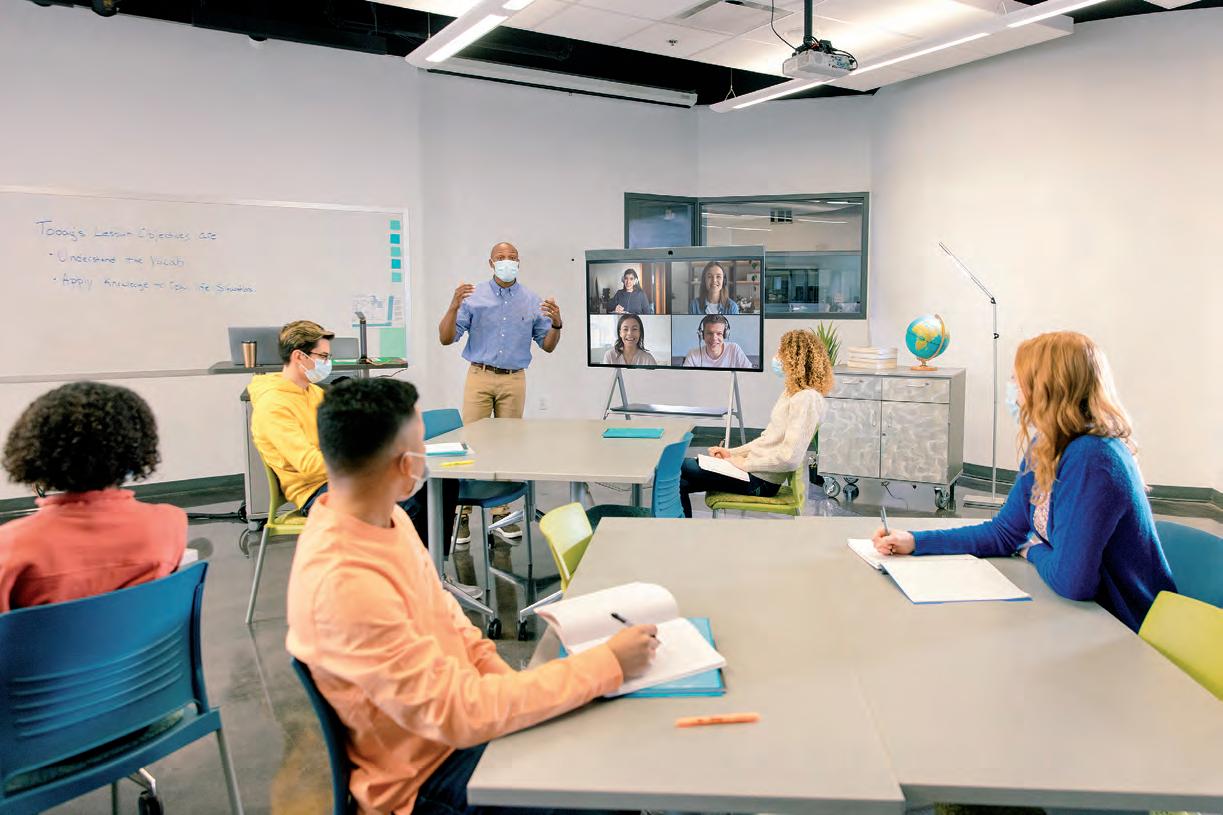

“Teachers seem to agree that rather than trying to throw all the latest technology at things -
The pandemic forced parents into more of a teacher role and gave them a rare insight into their child’s education. The report highlighted that for many schools this has resulted in increased parent-teacher engagement.
“We know that the home-school relationship, that parent involvement in their children’s education, is a very strong factor for student outcomes. And what we have seen over the last couple of years is that parents have had to become more involved in the student’s education,” says Sweeney.
“They got a window into how education functions and if we can continue that and if we can keep the parents engaged through the use of technology and other outreach programs that has the potential to have a significant uplift in student outcome,” Sweeney continues.
Losing sight of such lessons would be a tragic lost opportunity, the report concludes:
“It is up to us all - educators, policy-makers, administrators, technologists, students and parents - to ensure the lessons we’ve learned during the pandemic are taken forward and acted upon.” EM
Ben is 13 and has a special interest in buses. He spends his lunchtimes alone calculating local bus routes on the school oval.
This special interest is remarked on by fellow students and some of them have created Instagram accounts that reference his name and buses, such as @_BENloveshisstupidbuses. They post pictures of buses and add hashtags, such as #dontgetrunoverben #bensbuses and #iseeuonthebusBen.
Viewed from a distance and in isolation, these posts can seem relatively innocuous. But from the perspective of a 13-year-old boy who doesn’t know who’s creating and sharing this content, it was highly distressing.
Ben’s parents reported the posts to the social media platform but the posts didn’t violate their community standards. The school was made aware of the issue and suggested the parents make a report to the eSafety Commissioner.
At eSafety, we focus not only on the harm but on the individual context, circumstances and mental health, wellbeing and safety impact.
The eSafety Commissioner is the world’s first government regulator dedicated to keeping people safe online. We’re a team of educators, investigators, lawyers, policy and technology experts, digital specialists and other professionals who share one goal: a
safer and more positive online experience for all Australians.

Our main goal is prevention. We want children and young people to have safe and positive experiences online. Through eSafety.gov. au, we provide a range of tips and advice for children and young people on how to be informed, safe, online users.
In addition to prevention, we also have unique powers to protect and safeguard children and young people. This includes taking action against serious cyberbullying. When platforms fail to remove harmful content within 48 hours, you can then report to eSafety.
What do we mean by ‘serious cyberbullying content’? It means the content sent to the child or young person– or posted or shared about them – must be likely to harm their mental health, wellbeing and safety and is considered seriously threatening, intimidating, harassing or humiliating.
From the outside, some cyberbullying incidents may seem harmless or an isolated incident. But it is the impact on the child or young person that our eSafety investigators assess. For Ben, the collective impact of this targeted content was deemed to be intimidating and humiliating, so we could advocate knowing the effect on Ben. In this instance, we were able to have the content removed using our powers under the Online Safety Act.
We are all operating in a complex online ecosystem, where keeping up with the latest opportunities and challenges can seem like a never-ending task. That’s why we have a comprehensive range of support, resources and professional learning opportunities available for educators, including the ‘Best Practice for Online Educations and the Toolkit for Schools’ to support a whole-school approach.
As a proactive and responsive organisation, our Education team is listening, collaborating and responding to emerging needs and issues. We are hosting free, live webinars for teachers and wellbeing leaders to enhance their ability to prevent, respond and report critical online incidents. Our newest webinar explores case studies, incident assessment tools and how to support both primary and secondary school students and their families.
Register for the free ‘Responding and reporting critical online incidents in school settings’ webinar: esafety.gov.au/teacherwebinars EM
For further information visit, esafety.gov.au/report
*Ben’s name and details of the complaint have been changed.
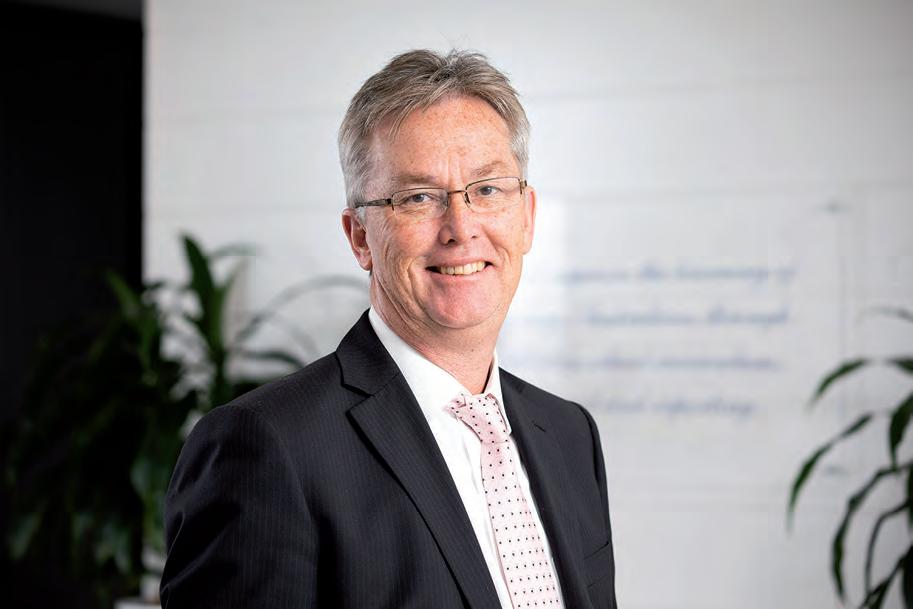
The last 2 years have been significant for the Australian Curriculum, Assessment and Reporting Authority (ACARA); the why of our work has not changed but the how and the what have undergone significant shifts.
In terms of the important work of assessment, the NAPLAN test event completed in May this year was a milestone that marked the first year all schools took the test online and the last year that the test took place in May.
The test event went exceptionally well, with a record 4.3 million tests successfully submitted by more than 1.2 million students in 9,315 campuses and schools across Australia.
I want to say thank you to the students, teachers and schools who helped make that happen, particularly those who grappled with the unique challenges of staffing and attendance impacted by COVID-19 and, in some cases, floods.
It was an important milestone for the program and for ACARA, and we know NAPLAN online is a better, more precise assessment that is more engaging for students.
Earlier this year, we had more significant changes made to the National Assessment Program.
In July last year, education ministers asked ACARA to investigate the feasibility of moving NAPLAN as early in the year as possible.
We worked with our partners in the states and territories and determined that it was possible to hold NAPLAN in Term One, starting from 2023, which the ministers agreed to.
We have also had significant changes to the national curriculum, with the Australian Curriculum Review and the launch of the new
Australian Curriculum, Version 9.0 website, which teachers tell us is set to change the way they use the curriculum.
A national curriculum ensures the same high standard of curriculum content and expectation of learning is available to every student, regardless of where they live and the updated Australian Curriculum, Version 9.0 is one that sets high standards.
Our driving focus throughout the review was the direction from the terms of reference, which asked us to refine, realign and declutter the curriculum. This meant substantially reducing the amount of content to make it more teachable.
One of the ways we facilitated streamlining the curriculum was with our new Australian Curriculum, Version 9.0 website. The website is not just the host for the updated curriculum but also one of the few digitalised curriculum websites in the world, with interactivity and features that will make it easier for teachers to plan their work.
A key aim of the review was to give teachers more time to teach for deeper understanding. This website does that. Teachers from across Australia were involved in user experience testing to make sure the new website has specific features to help teachers view, explore and plan.
The main feature is the selector tool, which is the gateway to the Australian Curriculum.
Everything the user needs is accessible from the top menu: all the information about the F–10 curriculum as well as advice about planning and implementation. This is also the jump-off point to explore the different dimensions of the
All curriculum materials are also now in Word rather than PDF format, which makes it easier for teachers to edit and work with the content to suit their purposes when lesson planning.
One of the most useful features is the inline glossary, which saves the user from having to toggle back and forth to look for word definitions. Instead of having to look things up in a separate document, teachers can now simply hover over a word to see a pop-up with its definition displayed.
Teachers used to the Version 8.4 curriculum will know well how laborious it was to move between the 3 dimensions of the curriculum.
The new website has done the work so the user can clearly see the connections between the 3 dimensions as well as between the learning areas.
We will maintain the existing Australian Curriculum website with the Version 8.4 curriculum and all support resources while Version 9.0 is now available on the new website. Both websites will remain live until all states and territories have transitioned fully to the Australian Curriculum, Version 9.0. EM
TEACHERS ARE LEAVING THE PROFESSION IN RECORD NUMBERS AND WITHOUT A COMPREHENSIVE LONG-TERM APPROACH THAT FOCUSES ON ATTRACTING AND RETAINING QUALITY TEACHERS, THIS PROBLEM WILL CONTINUE TO WORSEN OVER THE COMING YEARS. ANDREW SMITH, CEO OF EDUCATION SERVICES AUSTRALIA, DISCUSSES HOW TECHNOLOGY COULD HELP.
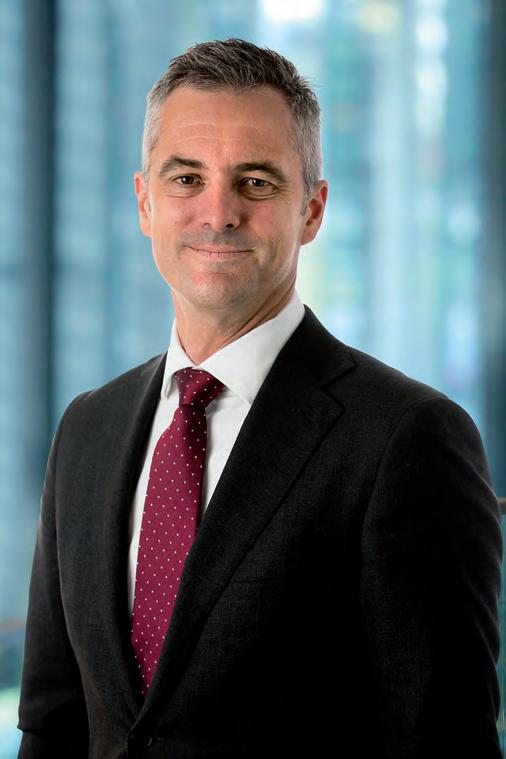
For good reason, the attention of education ministers and policy makers has turned to the teacher shortage that is confronting schools across the country. There is no single solution that will reverse the trend because the causes are varied and complex.
I am confident that with the full attention of education leaders from ministers to principals, we will find an effective response.
In the meantime, there is much we can do to support those already applying their expertise and skill in classrooms across the country through effective design and deployment of digital technologies.
Education technology, or edtech, is not new to our classrooms. Since the early 2000s, the education sector has been willing to explore ways in which technology can help students to learn better, help teachers to teach better and reduce the administrative burden in schools. Not all our efforts on this front have been successful but there is no doubt that the role and impact of technology in education has grown exponentially.
These education technologies, new and emerging, are important assets in our efforts to support teachers and allow them to focus on what they do best, shaping the learning of young Australians.
Some of the ways we can achieve this objective is to leverage existing high-quality digital resources to support curriculum implementation. Between 2008 and 2012, a bank of around 20,000 resources was developed and curated to support the
implementation of the original Australian Curriculum. Scootle, the portal through which teachers access this important national asset, continues to be heavily used by teachers.
The availability of a comprehensive suite of digital resources and units of lessons not only reduces teacher workload as they implement the revised Australian Curriculum, it also means that no student need be at risk of learning loss in the event of a pandemic, floods or other circumstance that mean physical participation in a classroom is impossible.
These resources and lessons can be provided to students who cannot attend school; used for homework or revision; used in the classroom to support differentiated learning; and support professional development of teachers.
Data shows that up to 40 per cent of teachers are teaching out of field and many students spend up to a year of their schooling taught by casual relief teachers. Edtech has an important role to play in supporting teachers as they navigate unfamiliar territory in areas such as literacy, mathematics and language learning. The Australian Government’s Early Language Learning Australia (ELLA) program has been shown to be an effective tool in fostering language learning in classrooms staffed by teachers who have no formal training in this area.
Maturing technologies, including artificial intelligence, are increasingly prominent in our daily lives. These
There are also opportunities to use AI to anticipate and develop models for early identification of students at risk of falling behind on their learning journey or in dropping out of school altogether. These predictive models can provide an additional data point for teachers to complement their own expertise.
Of course, privacy and information security must be paramount in the design and deployment of edtech. Programs such as the Safer Technologies 4 Schools (ST4S) initiative that undertakes risk assessments of commonly used products can reduce the burden created for teachers who will want to ensure the cyber-safety of their students.
None of these education technologies are a replacement for the expertise and personal connections that teachers establish with their students but they, and others, offer opportunities to address some of the challenges that we face in building and developing a teaching workforce that can develop future generations of young Australians. EM
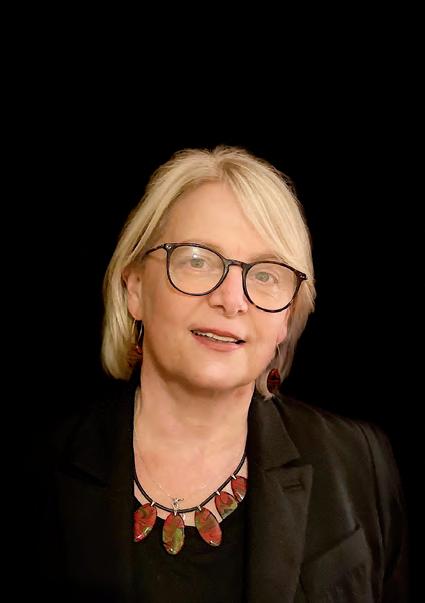
Secondary schools are incredibly diverse places. They reflect the ‘super-diversity’ we see in the wider community, and they are also places of belonging and learning. This means that secondary schools are constantly challenged to respond to the young people who gather in their spaces. One way in which schools can respond to students is through a differentiated approach. This is an approach that is responsive to students.
The challenge for secondary schools is to create opportunities for the young people in their communities while also meeting the goals of the curriculum frameworks which delineate standards of achievement. This challenge becomes trickier as students move into the senior school where possibilities for differentiation can be diminished by assessment requirements. How can we respond to the different knowledges, dispositions, aspirations, and interests of students while meeting our qualification obligations?
Teachers in secondary schools are well aware of the obligations they have to guide students to meet assessment requirements and achieve qualifications. They work to create opportunities for students to participate in the curriculum by knowing who their students are. This is the core of differentiation. Differentiation implies the application of deep knowledge of curriculum to generate opportunities for individual students within a community.
I have recently been working with teachers at a secondary school in Adelaide to explore ways of differentiating to enable students to engage, participate and succeed. These educators knew a lot about differentiation.
And they knew a lot about their students. When I asked them to identify what they saw as the conditions in which differentiation could flourish, they were unequivocal about the primacy of trust and relationships. Secondary school teachers know that these things are key. They spoke about the importance of knowing their students – not only through the data they collect, but also as embodied, feeling human beings with complex lives and personal narratives within and beyond school. It was evident that for these teachers, relationality was a powerful aspect of their philosophy of differentiation.
These educators also knew that things like access to resources, supportive environments, and flexible options were important conditions for differentiation to be possible. The task is not easy. This takes time and a positive mindset – time to design curriculum that all students can engage with and willingness to listen and respond.
The concept of differentiation has resonance with some of the recent work around learner agency that has been evident in secondary schools over the last few years. Where learner agency and differentiation intersect is in the way that students understand themselves in relation to the knowledges and skills valued in the school and in the way that students articulate that understanding. Differentiation is enabled when students can express what they need and when teachers are able to listen to what they say. Agency is enabled in conditions of dialogue and negotiation. I recently heard about a school where students in the year 11 and 12 classes, having returned from home study provoked by the pandemic, asked for
greater freedom to choose what they worked on during the school day. They found that they wanted to continue aspects of the self-directed learning they had experienced in that time. They wanted to negotiate their own deep dives into the content and meet with teachers for their expertise and guidance. This is agency and also differentiation.
Like differentiation, learner agency is generated in the relationships between teachers and students, curriculum and pedagogy, assessment and learning. Teachers play a crucial role in making those relationships meaningful. One of the best examples I have seen in recent years was when I visited a pre-service teacher on practicum in a year 11 English class. She had visited the school several times before the placement commenced and during these ‘lead-in’ days she had observed an incident on the oval which had affected many students. This incident and the events that surrounded it became a provocation for her curriculum design. She drew on the students’ experiences to explore and analyse an aspect of language that she knew was relevant and indeed significant in their lives. I noted, when I observed this teacher, how beautifully she created opportunities for each student in that class to participate in the discussions with her and with others and to access the assessment task in ways that were enabling and meaningful for them. It was a great example of belonging and learning in a ‘super-diverse’ class. EM






